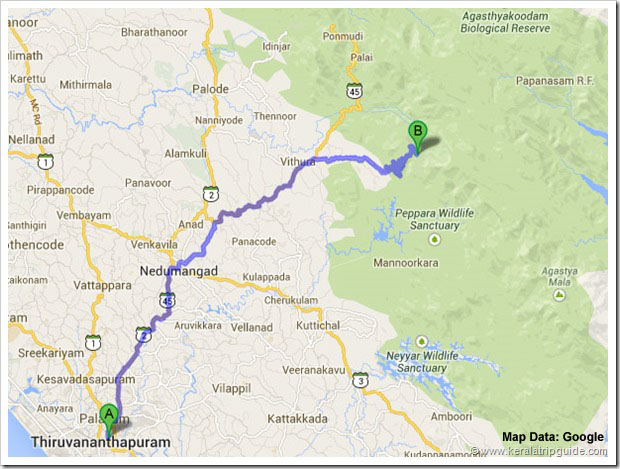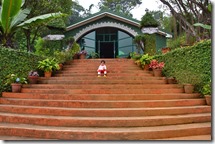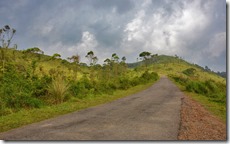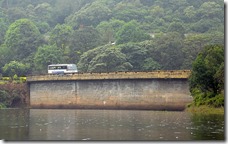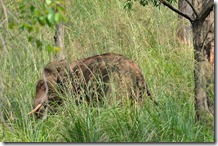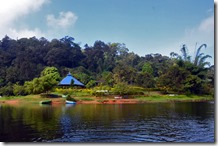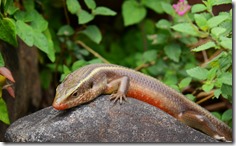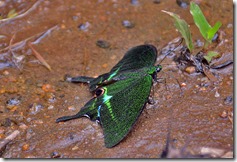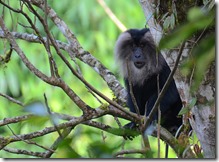How to Improve Your Programming Skills
Talk is cheap. Show me the code – Linus Torvalds
Introduction
I have been programming professionally for over 16 years. My first language was Java 1.1 and these days I work primarily with Java 7 or Java 8. One of the interesting side effects of a being a programmer is that you are learning new things almost all the time. The language, the development environment, the tools, and even the people whom I work with change frequently. It is a challenge and an opportunity. Even though I have been working with Java for last 16 years, I had the opportunity to learn a lot of other languages (C#, Ruby, JavaScript, PHP, Swift, Objective-C) and technologies (Android development, iOS development).
I have been constantly looking at ways to improve my programming skills and this blog post is an attempt to summarize what I have learned over the years. Trying to solve complex problems on a daily basis will definitely improve programming skills, but some of the following practices will speed up the learning process.
Here are the 12 ways to improve your programming skills,
1. Read the Documentation (RTFM)
Whether you are working with a programming language or a software library, you should at least once read through the entire official documentation. You may not learn everything, but you will be aware of the capabilities and the limitations of the language or the library you use. Here are some examples from my experience,
If you are a Java programmer, you should go through Oracle’s official Java tutorials. If you are a Java web application developer who frequently uses Struts2 framework, you should go through the Struts2 documentation.
If you are an Android developer, read the entire Android API guide.
Reading through the documentation may seem like a daunting task and you may not understand everything you read, but it would be very helpful in the long term. It gives you the 20,000 feet view of the language or the library.
2. Study Open Source Projects
One of the beautiful things about programming is that a large number of expert programmers and software companies share their work publicly as Open Source Software. To accelerate your learning, study popular open source projects in your programming field. Downloading, studying and running these projects enables you to quickly grasp how top programmers use the language and libraries effectively.
Always look for high quality open source projects from well known programmers or software organizations such Apache Foundation. For example, If you are an Android developer, you can look at some cool open source projects from Jake Wharton such as Retrofit or butterknife.
If you are a Java programmer, look for trending Java projects on GitHub or take a look Apache projects. Some of the cool projects to look at are Apache Commons, Apache Struts 2 and Apache Hadoop. If you are a .NET/C# programmer, take a look at this list of .NET open source projects. Some of the cool open source .NET projects are Microsoft EntityFramework, NUnit and CruiseControl.NET. You can also take a look at trending .NET projects on GitHub.
3. Study the Source Code of Platforms, Frameworks and Tools
In addition to studying third party open source projects, you can also take a look at the source code available for your platform, tools or frameworks. Since the source code in this case is written by experienced programmers who are responsible for the platform/framework/tools, this code is usually of very high quality. This code is also the most tested code available for you to study!
By studying the source code, you will learn how your programming platform works under the hood. This gives you considerable confidence on the code you write. For example, if you are an Android developer, you can download and study the Android platform source code. Similarly if you use Struts2 in your Java Web applications, you can download Struts2 source code and take a look under the hood.
Source code for most of the major platforms/frameworks/tools are available these days. Check out the following links to some of the major source code repositories,
4. Study Code Written by Your Peers
If you work in a company, try to find top developers in your team or organization. Study their code and try to understand the logic or patterns used. If you don’t understand something, ask the authors for help.
You can also ask top programmers in your team to take a quick look at the code you write (I am not talking about the formal code reviews). Most of the folks would be more than happy to help you. Find someone who is willing to be your programming mentor. Having a mentor is probably the fastest way to be an expert programmer (or for that matter to be an expert in any endeavor). The feedback loop is short and you will quickly attain the mental model level of your mentor.
5. Study Your Development Environment
Learn the features available in your development environment or IDE thoroughly. Efficient use of development tools and IDE will substantially improve your programming productivity. Learn the shortcuts and features offered by the IDE and deliberately practice them. Initially you may find this a bit hard, but after a while you will wonder how you worked without those tricks and shortcuts!
Each IDE offers a list of tips for increased productivity. Find your favorite IDE in the list below, take a printout of the tips and tricks page and keep it near your desk.
- Eclipse Tips and Tricks
- Xcode Keyboard Shortcuts
- NetBeans Tips and Tricks
- Android Studio Tips
- IntelliJ Tips
- Komodo IDE Tips
- Microsoft Visual studio
- Zend Studio
6. Attend Online Programming Courses
Recently there has been an explosion of online courses available for programmers. Both paid and free courses are available for different programming skill levels. I have found that even free courses are very helpful and valuable in learning new technologies. I recommend that once you enroll in a course, push yourself to complete it and attempt all the exercises and tasks given as part of the course.
One good thing about online courses is that most of them are created by experts and the curriculum will cover all the major ideas and best practices in the field. I have attended many of these programming related courses and found them to be challenging and useful. Here are some of my favorites,
- Developing Android Apps (UD853) by Udacity. This is an excellent online course for learning Android development.
- How to use Git and GitHub(UD775) by Udacity. Git is now the main version control system for most projects and this will give you hands on experience on the tool.
- Stanford Video Lectures on iOS Development. This is not an online course, but rather video recording of Stanford iOS course (CS193P). I found it very useful to learn iOS programming.
Here is a partial list of Websites offering online courses,
- Udemy – Udemy offers free and paid courses on a wide variety of topics, programming being one of them.
- Udacity – Udacity offers free and paid courses for programmers. Recently they seem to be focusing on mobile development. Companies such as Google also publishes their free training courses here.
- Coursera – Coursera offers a large number of training courses from major universities across the world on a wide range of topics. Most of the courses are free.
- edX – edX offers a large number of free online courses from a number of universities.
7. Read Top Programming Books
Programming books gives you a complete overview of the programming subject being covered. It reflects years of professional experience that the author has in the subject. Reading books is a quick way to attain considerable high level understanding of your programming field.
When it comes to programming, there are 2 distinct types of books – books that deal with the language, framework or tool fundamentals and books that deal with conceptual knowledge and best practices. Books of the first category gets obsolete pretty soon and I usually avoid hard copies of them. But books of the second category are the most useful and you should have them in your library.
I specialize in Web application programming and following are some of the books that has been very influential in my career. Some of them deals with software methodologies or about structuring software teams. As you progress in your career, these are as important as the knowledge of the programming language or best practices.
I have the following books in my library. I highly recommend these books (Please note that my primary area is Java based technologies),
- JavaScript: The Definitive Guide by David Flanagan
- Effective Java by Joshua Bloch
- Expert One-on-One J2EE Design and Development by Rod Johnson
- Design Patterns: Elements of Reusable Object-Oriented Software by Erich Gamma, Richard Helm, Ralph Johnson, John Vlissides
- Code Complete: A Practical Handbook of Software Construction by Steve McConnell
- Don’t Make Me Think, Revisited: A Common Sense Approach to Web Usability by Steve Krug
- Scrum: The Art of Doing Twice the Work in Half the Time by Jeff Sutherland
- The Pragmatic Programmer: From Journeyman to Master Andrew Hunt, David Thomas
- Refactoring: Improving the Design of Existing Code by Martin Fowler, Kent Beck, John Brant, William Opdyke, Don Roberts
8. Learn Basics of Data Structures and Algorithms
Large number of programmers have no formal education in programming. This means that they have little background in algorithms and data structures. One of the key things that differentiate good programmers from brilliant programmers is the knowledge of algorithms and data structures.
If you have a fairly good idea of algorithms and data structures, you will find that you can handle complex programming tasks much faster. When it comes to usual Web development, mobile development etc. you may find that you can get a lot of things done without deep knowledge of algorithms and data structures. However if you start working on anything complex such as machine learning, data processing or reporting, you will be handicapped without a solid foundation in Algorithms and Data Structures.
Following is a set of resources for learning data structures and algorithms,
- Book: Introduction to Algorithms by Thomas H. Cormen, Charles E. Leiserson, Ronald L. Rivest, Clifford Stein
- Princeton University course on Algorithms
- Udemy Course On Introduction to Data Structures & Algorithms in Java
- Naveen Garg’s Video Tutorials on Data Structures (IIT Delhi)
- TopCoder Algorithm Tutorials
9. Learn Attributes of Good Software Code
Once you master a programming language, the next thing to learn is the attributes of good code. Programming is relatively a new human endeavor, but still there is considerable research data available on what makes good programs. High quality software programs are readable, flexible, extensible, testable, maintainable and reusable. Learn specific techniques that will enable us to meet these software requirements. I recommend that you read Clean Code: A Handbook of Agile Software Craftsmanship by Robert C. Martin and Code Complete: A Practical Handbook of Software Construction by Steve McConnell.
10. Participate in Online Programming Challenges
It is now generally known now (thanks to the book Outliers by Malcolm Gladwell) that in order to attain expert level skills (world class) in any area, you need to practice for at least 10,000 hours. The same applies to programming as well. Solve programming problems, work on interesting projects and regularly participate in online challenges to improve your programming skills.
Whenever I get free time, I try to solve interesting programming problems. Following is a list of Websites providing online programming challenges and problems,
- Codwars - Achieve code mastery through challenges.
- TopCoder – Challenge yourself, and get paid!
- GeeksforGeeks – Computer science portal for geeks
- Sphere Online Judge (SPOJ) – Become a true programming master
- Project Euler – Computer programming problems
- HackerRank – Programming problems and competitions
- DailyProgrammer on Reddit – Daily programming problems
11. Write More Complex Code
One of the important aspects of skill acquisition is that whenever you work on the edges of your capability, your capabilities substantially improve. This applies to programming as well. Look for difficult and complex problems and try to solve them in your area of expertise. Some of the interesting examples of such complex problems include character recognition, solving captchas, machine learning algorithms etc.
Another way create complex code is to try to solve programming problems with intent of making them as generic as possible. A generic solution is always much more complex than solutions which are tailored to a specific data set or problem.
12. Use Code Analysis Tools
There are a number of tools available to check the quality of your code. These tools have a pre-defined set of rules against which the code is evaluated. It is also possible to integrate these tools to your IDE. For example, You can integrate CheckStyle to the Eclipse Java IDE and whenever you write Java code, CheckStyle will report errors or warnings based on its configuration. CheckStyle comes with a set of predefined code quality metrics, however you can fine tune it based on your project needs. If you are a Java developer, you should check out these tools,
If you work on .NET technologies, check out NDepend for Visual Studio. Enabling these tools as part of IDE forces you to improve the code you write.
Summary
In this post, I have given an overview of the ways in which you can improve your programming skills. There are a large number of programming opportunities available and good programmers are in great demand and command good pay. I would recommend that you spend a predefined amount of time on each of the above learning activities every week. As Peter Norving argues in his essay, Teach Yourself Programming in Ten Years, The key is deliberative practice: not just doing it again and again, but challenging yourself with a task that is just beyond your current ability, trying it, analyzing your performance while and after doing it, and correcting any mistakes.
Additional Reading/References
Book Review: Zero to One by Peter Thiel
Never invest in a tech CEO that wears a suit.
Introduction
Zero to One: Notes on Startups, or How to Build the Future by Peter Thiel is a very popular book in India these days. This is hardly surprising since Startups and their crazy valuations are prime time news these days. I recently picked up this book and was very impressed by Thiel’s ideas. This book is packed with lot of useful takeaways for anyone thinking of starting a new technology venture.
Zero to One: Notes on Startups, or How to Build the Future by Peter Thiel
In Zero to One, Thiel argues that building something entirely new (zero to one) is much more difficult than growing something (one to n). He then attempts to lay out the basic principles behind building a successful technology business. The book starts off with a question – Is there an important truth that only few people agree with you? Thiel argues that such a truth is going to be accepted in the near future and hence holds incredible value in the long term. He then lists out a number of things that we learned from the dotcom crash of technology companies during 1999-2001,
- Make incremental improvements
- Stay lean & flexible
- Improve on competition
- Focus on products, not sales
While reading the book, I nodded to all the above. But then he goes on to say that we may have got these wrong. What if,
- It is better to risk boldness than triviality
- A bad plan is better than no plan
- Competitive markets destroy profits
- Sales matter as much as the product
Again I ended up nodding to all of these points. This sudden shift of perspectives was unexpected when I was reading the book. Thiel’s ability to make us think is what makes this book so good. Thiel takes us on an intellectual ride as we get to learn a lot from his experiences as a startup founder (Paypal, Palantir) and a venture capitalist.
Thiel points out that in order to build a successful and sustainable company, the biggest challenge is to escape the competition. The key characteristics of such a monopolistic and successful company are,
- Proprietary technology (this should be at least 10 times better than nearest competitor!)
- Network effects (Start with small markets. For example, Facebook started with Harvard students)
- Economies of scale
- Branding (Build a brand backed by good product)
Thiel goes on to write,
Tolstoy opens Anna Karenina by observing: “All happy families are alike; each unhappy family is unhappy in its own way.” Business is the opposite. All happy companies are different: each one earns a monopoly by solving a unique problem. All failed companies are the same: they failed to escape competition.
Thiel argues that there are still secrets to be found in the world and such secrets are an important element of innovative companies. According to him we lost belief in secrets due to incrementalism, risk aversion, complacency and flatness. He presents a compelling argument for going after yet to be discovered secrets.
Zero to One contains a lot of interesting anecdotes and stories such as the sad story of French chef Bernard Loiseau who was a 3-star Michelin rated chef. Thiel uses his story as an example of the challenges of undifferentiated commodity business. He also uses the plot of Hitchhiker’s Guide to Galaxy to argue that we tend to underrate the importance of sales in business. Thiel argues that Salesmen are actors and their priority is persuasion, not sincerity. He then points out the art of persuasion in Mark Twain’s Tom Sawyer,
Tom Sawyer managed to persuade his neighborhood friends to whitewash the fence for him— a masterful move. But convincing them to actually pay him for the privilege of doing his chores was the move of a grandmaster, and his friends were none the wiser. Not much has changed since Twain wrote in 1876.
According to Thiel, every business must answer the following questions,
- The engineering question – can we create breakthrough stuff?
- The timing question – Is now the right time?
- The monopoly question – Are you starting with a big share of small market?
- The people question – Do you have the right team?
- The distribution question – How do you distribute your product?
- The durability question – Can this last for 10 to 20 years?
- The secret question – Have you identified a unique opportunity?
Thiel predicts that future successful companies will ask this question – How can computers help humans solve the hard problems? He bets on it as he is one of the founders behind Palantir Technologies.
Review Summary
Zero to One is a small and intellectually engaging book. It is an essential read for anyone planning to build a successful and sustainable innovative technology company.
Positively defined, a startup is the largest group of people you can convince of a plan to build a different future.
My Rating: 8/10
Online Resources
Book Review: The Art of Thinking Clearly by Rolf Dobelli
“I don’t make predictions. I never have, and I never will.” – Tony Blair
Introduction
Rolf Dobelli’s book, The Art of Thinking Clearly briefly explains common human behaviors which can be interpreted as illogical behaviors. This book is a database of human biases, fallacies and illusions. The title of the book is misleading since people may think that it is a self-help book containing advice on “clear thinking”. It is NOT. A more apt title would be “Human cognitive biases, fallacies and illusions”. But then will it sell?
The Art of Thinking Clearly by Rolf Dobelli
Dobelli uses simple, direct and engaging writing to explain 99 human cognitive behaviors in individual chapters spanning 2 to 3 pages. What I like most about the book is that it is full of interesting quotes, stories and anecdotes. It makes reading pleasant and entertaining. Each chapter provides a brief overview of the bias, overview of relevant scientific studies and finally author’s own advice on the matter. You should take the advice with a grain of salt unless of course you want to become a world-class jerk.
In The Art of Clear Thinking, Dobelli claims that most of our biases are the result of human evolution. Assume that you are born thousands of years ago and you are walking in a forest with your friends. Suddenly all your friends start running. You wouldn’t stop and think before running after them unless you want to end up as lunch for the resident Tiger. People who did think for long quickly exited from human gene pool! Dobelli claims that these behaviors are no longer useful in the modern world where logic and reasoning is the king. However in the epilogue, he admits that he himself doesn’t follow his own advice. Thinking is too tiring to be done every time you need to make a decision!
The Art of Clear Thinking is heavily influenced by Nassim Nicholas Taleb’s books (Antifragile, The Black Swan, Fooled by Randomness). This has lead to allegations of plagiarism by Taleb. Taleb claims that Dobelli not only picked ideas but also sentences from Taleb’s works. Taleb’s accusations are here and Dobelli’s response is here. Other influences on the book are ideas by Warren Buffet and the book Thinking, Fast And Slow by Daniel Kahneman. There are also plenty of references to scientific studies on human behavior, some of which are very interesting! (See – Marshmallow Test Video and Monkey Business Illusion).
I think it is important for key decision makers to be aware of human cognitive biases. Many of the logical decisions we make can have disastrous effects if we are not aware of these biases. Here is a classic example from the book (Never pay your lawyer by the hour),
In 1947, when the Dead Sea scrolls were discovered, archaeologists set a finder’s fee for each new parchment. Instead of lots of extra scrolls being found, they were simply torn apart to increase the reward. Similarly, in China in the nineteenth century, an incentive was offered for finding dinosaur bones. Farmers located a few on their land, broke them into pieces and cashed in. Modern incentives are no better: company boards promise bonuses for achieved targets. And what happens? Managers invest more energy in trying to lower the targets than in growing the business.
Similarly I see confirmation bias every single day on my Facebook feed. People share complete lies without even doing a cursory check for its accuracy simply because it conforms to their beliefs.
For a happy, contended life we should be able to control our thoughts and behaviors. Take for example, the paradox of choice. Beyond a level, more choice doesn’t translate to better life or more happiness. Rather it can lead to unhappiness and stress! Another one of the human weaknesses is our tendency to fall into Hedonic treadmill. The more we achieve, the more we want. The happiness from our possessions are very short lived. These are some of the fallacies covered in the book. But then it is precisely these human imperfections which makes us human. It is the same weaknesses which creates heroes. We need to be aware of our cognitive imperfections, but in many cases our “gut feel” is better than logical thinking. Sometimes we simply don’t have the time for logical thinking!
One thing that I don’t like about the book is the lack of sources and references at the end of the book. An online link for sources is given in the book which no longer works. Authors must ensure that everything part of the book remains in the book since there is no incentive for the publisher to keep online pages available.
Review Summary
The Art of Thinking Clearly is an excellent and entertaining book providing a good overview of human cognitive behaviors. With plenty of anecdotes, stories and quotes, this book is an ideal book to read during your travels. This book can make you aware of human biases which may positively affect your decision making.
The Pope asked Michelangelo: “Tell me the secret of your genius. How have you created the statue of David, the masterpiece of all masterpieces?” Michelangelo’s answer: “It’s simple. I removed everything that is not David.”
My Rating: 8/10
Online Resources
- Book: The Art of Thinking Clearly
- The Marshmallow Test (Video Depicting Hyperbolic Discounting Bias)
- The Monkey Business Illusion (Video Depicting Illusion of Attention)
Further Reading
Valiathura Pier
Introduction
Valiathura Pier
Valiathura Pier is an evening picnic attraction located in Thiruvananthapuram. It is a damaged pier out of service for a long time and officially people are prohibited from entering it. Still it is a popular evening tourist destination since it is the only place in Thiruvananthapuram that offers fantastic views of the Arabian sea on one end and excellent view of the coastal line from Sanghumugham to Kovalam on the other end.
The current pier is over 50 years old and has a width of around 7m and a length of over 200 metres. You can still see the remains of the rails used to transport cargo from the pier to the nearby godowns. The pier structure has considerable damage due to heavy monsoon waves and salty winds and no maintenance has been done for a long time. Portions of sidewalls are missing and hence anyone walking on it must be extra careful.

History of Valiathura Pier
Valiathura was one of the oldest ports in south Kerala. In olden times, large steam ships used to bring in cargo to this port. Since the pier was built in shallow waters, the cargo was first transferred from large ships to the pier using smaller boats and was then transferred to the adjacent godown using the rails. Historical records show that Valiathura pier was in existence as early as 1825. In November 23, 1947, a steam ship named S S Pandit lost control and rammed on to the pier destroying it. A large group of local fishermen and port workers who were on the pier had fallen into the sea. According to official records 5 people died in the accident. The current pier was built in 1956 and was inaugurated by Dr. P S Rau.
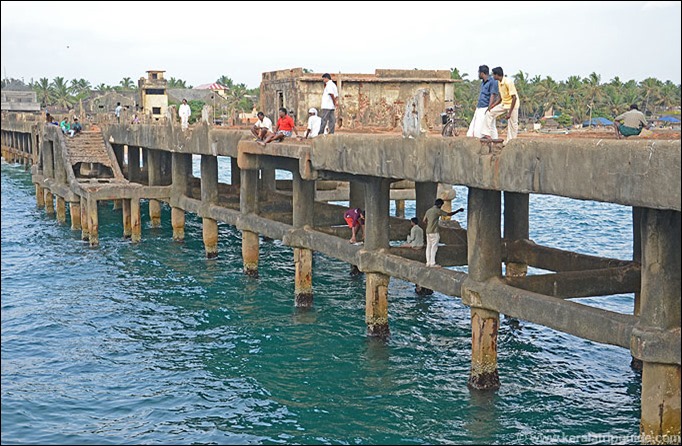
Valiathura was one of the major ports in south Kerala until the Cochin port was developed as a major port. Valiathura pier and port was declared inactive in 1980s and since then it has been abandoned. Currently the pier is used fishermen for launching their catamarans and for angling. Tourists walk in here in the evening for the mesmerizing views of the Arabian sea.
In 2007, Harbour engineering department announced plans for reconstructing Valiathura pier. The proposal is to convert it into a fishing pier with facilities to support local fishermen. As of 2014, only initial works were carried out.
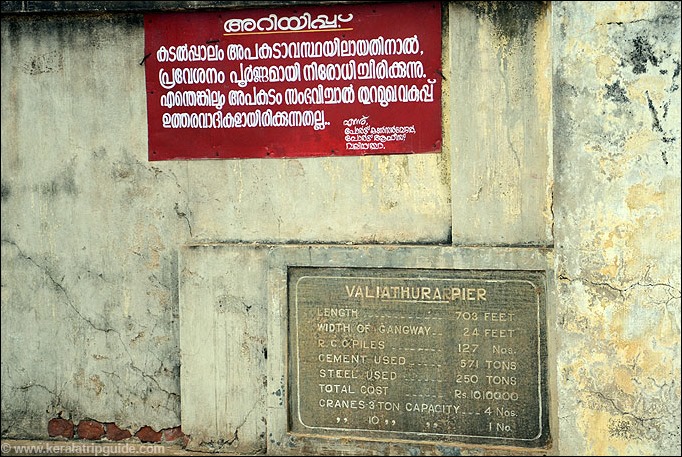
Getting to Valiathura Pier
Valiathura pier is located about 5km from Thiruvananthapuram city and regular buses are available from the city. There are two main routes to reach Valiathura from city.
Route 1 (6km) : Thiruvananthapuram City => Valiyasala => Attakkulangara => Sreevarahom => Valiathura Pier . This is the shortest route and passes through the southern end of Thiruvananthapuram airport. Halt about 1km away from Valiathura pier to get really close views of the airplanes landing in the airport.
Route 2 (13km): Thiruvananthapuram City => Palayam => Pettah => Chakka => Sanghumugham beach => Valiathura Pier . This is a longer route but gives scenic drive through the airport road and Sanghumugham beach. Take the road to the right in front of the domestic airport to reach Valiathura pier.
Usually you will find parking space near the pier entrance. You will also find a number of street vendors offering ice-creams, peanuts etc.
Main Attractions at Valiathura Pier
Valiathura pier is ideal destination for an afternoon visit. Following are some of the attractions/activities in Valiathura pier and surrounding areas.
Valiathura Pier: Valiathura pier offers fantastic views of the Arabian sea. You will find anglers trying different hooks and techniques for fishing and some of them are really good at this. You may also get to see the time consuming and challenging method of launching catamarans from the pier. For the fishermen, the pier also provides much needed shade to relax.
It might seem dangerous, but you will find locals casually walking on the concrete connecting slabs under the pier. During summer, you will find local children jumping from the top of the storage building located on the left of the pier. If you look closely, you can see armies of small fish floating around the pier.
Fishing Market: You can buy fish from anglers (fresh catch tastes much better!) or from the street side fish vendors located to the right of the pier entrance. Bargaining is the norm here.
Walk to Sanghumugham Beach: Sanghumugham beach is a very popular destination in Thiruvananthapuram during weekends. It is located about 2km from the Valiathura pier towards north. You can walk from Valiathura to Sanghumugham beach. However please note that this area is heavily populated and walking with family or walking in the mornings are not recommended.
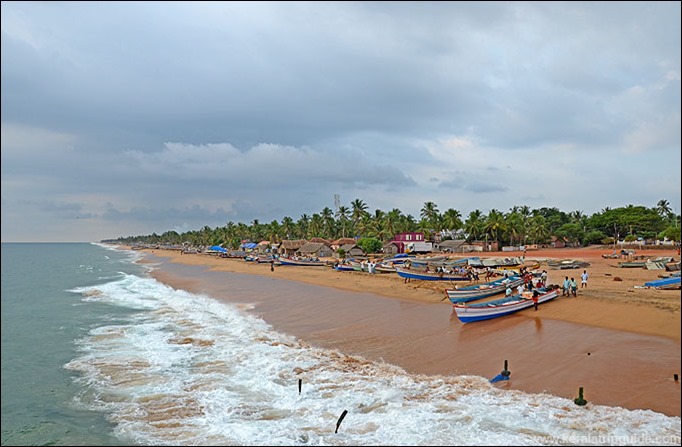
Watch Beach Football: There are a number of local football clubs and if you are lucky, you might get a chance to watch beach football. During summer, football tournaments are also organized on the beach.
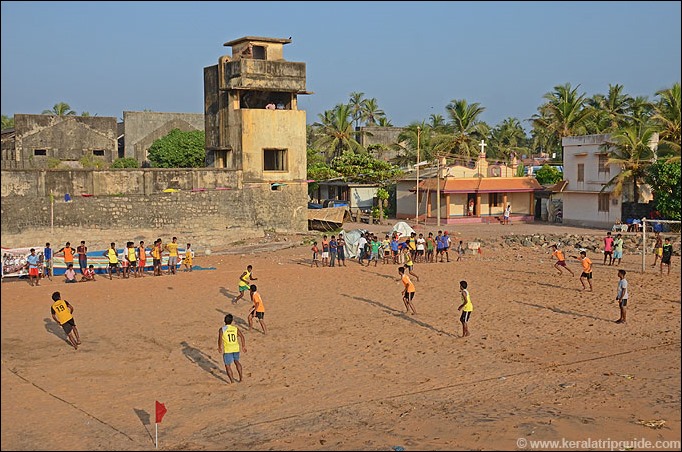
Photography: The pier and the surrounding areas offer excellent opportunities for photography. The pier is an excellent location for photographing birds in flight.
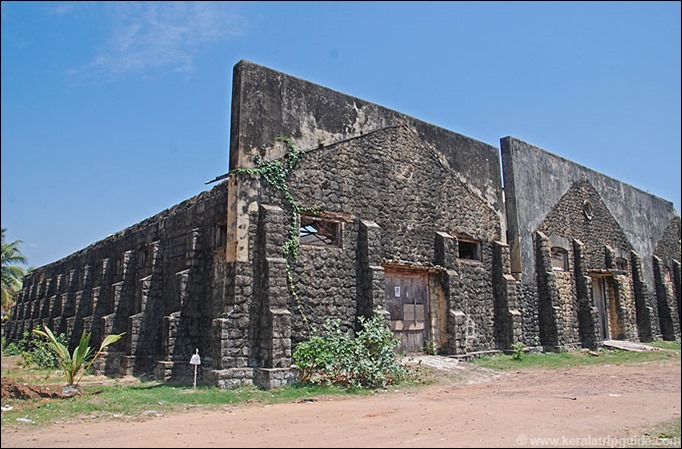
Fishing: Valiathura pier is a favourite destination for hobbyist anglers. However catching fish is easier said than done! Going alone to pier with expensive angling gear is not recommended.
Valiathura Pier Travel Tips
- Valiathura pier is currently in a dangerous condition due to the extensive damage to the structure. Walking on the pier is not recommended when there are strong waves or when there are too many visitors on the pier.
- Be very careful when taking children on the pier as sidewalls are missing in many places.
- Valiathura is a densely populated fishing village. Like any poor village, there are anti-social elements (who may be drunk) hanging around this area. Always be alert when you are on the pier. If you had to deal with such elements, respond politely and firmly.
- While walking on the pier is tolerated, taking any vehicle on the pier is an absolute no-no. If you do take your car or bike on the pier, local police will confiscate it when they arrive on their usual evening patrol.
- If you buy fish from the anglers on the pier or from the street side vendors haggle to get discount. When you see a stack of fish, expect the worst under the first visible layer!
- You will find people hanging around on the pier even at night and it is an interesting experience. However avoid it if you are with women and children.
- Walk on the road towards east for about 1km to get to the airport boundary. This place gives you fantastic views of the landing airplanes. Airplane landings are also visible from the pier.
Summary
Valiathura pier is one of the best spots for watching sunset in Trivandrum. It also offers a way to enjoy sea breeze and to get a view of the traditional catamaran launch. However avoid walking on the damaged pier during monsoon or when the waves are strong. Don’t take children on the pier as the pier walls are damaged and are missing in many places.
Online Resources
Agasthyakoodam Trek
Introduction
Agasthyakoodam Trek
Agasthyakoodam (also known as Agasthyarkoodam) is a 1868m tall mountain within the Neyyar Wildlife Sanctuary in Thiruvananthapuram district, Kerala. It lies on the border between Kerala and Tamilnadu. It is also known as Agasthyamala in Malayalam and Pothigai Malai in Tamil. This mountain belongs to the Ashambu Hills, the southern end of Western Ghats. There are over 25 peaks in Ashambu Hills and Agasthyakoodam peak is the tallest one among them.
The forests around this peak are famous for the abundance of rare medicinal herbs and plants. It is also far away from human settlements, making it one of the pristine natural forests in Kerala. It hides one of the richest concentrations of biodiversity in the entire Western Ghats. Among the peaks of Western Ghats, Agasthyakoodam ranks as a medium peak. However, it has a magical aura around it and as you trek up the mountain, you feel refreshed and recharged. People believe that even the wind here has medicinal properties and will protect or cure you from diseases.
 One of the most interesting things about Agasthyakoodam is the rapid changes in landscape as you trek towards the peak. This trek will take you through moist deciduous forests, semi evergreen forests, grasslands and evergreen forests. Finally you will trek through dense evergreen forests and rock formations to reach Agasthyakoodam peak.
One of the most interesting things about Agasthyakoodam is the rapid changes in landscape as you trek towards the peak. This trek will take you through moist deciduous forests, semi evergreen forests, grasslands and evergreen forests. Finally you will trek through dense evergreen forests and rock formations to reach Agasthyakoodam peak.
The original inhabitants of these hills are a tribe known as “Kanis” . Currently there are about 400 Kani families living around these areas. Kani settlements are located near the basins of streams of Karamanayar and Neyyar away from the core area of Agasthyakoodam. Some of the tribals work with eco-development committees organized by forest department. Recently they also started working as guides/staff for the Agasthyakoodam trek.
Agasthyakoodam Legends
Agasthyakoodam peak is also a pilgrimage destination for Hindu devotees who believe that sage Agasthya meditated on the mountain. Sage Agasthya is one of the seven maharishis(Saptarishis) in Hindu puranas. There is a small shrine on the mountain top with an idol of Agasthya rishi and during Agasthyakoodam trekking season, people perform pujas here.
Agasthya sage is considered to be guru of Ayurveda system of traditional Indian medicine. Most of his statues depict him with a stone crusher in one hand and a bowl of medicines in the other. He is also considered as the father of Tamil literature and Siddha medicine.
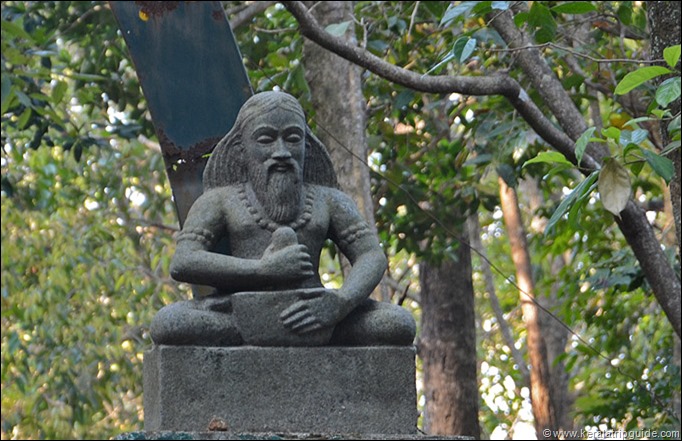
According to one of the legends, Everyone including maharishis moved to Himalayas during the wedding of Lord Shiva and Parvathi. This caused the earth to tilt to one side and Lord Shiva asked Agasthya to go to south and balance the earth again. Agasthya came to the southern mountains and he liked the place and stayed on. There are plenty of other interesting legends about Agasthyamuni.
Agasthyamalai Biosphere Reserve
Biosphere reserves are sites established by various countries under the UNESCO (United Nations Educational Scientific and Cultural Organization) operated program called Man and the Biosphere (MAB). This program aims to create biosphere reserves to protect biological and cultural diversity of a region while promoting sustainable economic development. Agasthyamalai Biosphere Reserve (ABR) was established in 2001 under the UNESCO MAB program. This is a large site covering about 3500 square kilometres and spans across the forests of southern Kerala and Tamilnadu. The areas in Kerala under ABR include Neyyar wildlife sanctuary, Peppara wildlife sanctuary, Shendurney wildlife sanctuary, Achencoil, Thenmala, Konni, Punalur and Agasthyavanam biological park. Agasthyakoodam is the eastern boundary of Agasthyavanam biological park. On the eastern side Agasthyakoodam is protected by Mundanthurai tiger reserve (Tamilnadu).
Agasthyakoodam Trekking
Agasthyakoodam peak and surrounding areas are protected reserved forest under the control of Kerala Forest Department and entry is restricted. Forest department allows a controlled pilgrimage/trek during January to March of every year. This pilgrimage starts on the day of the Makaravilakku festival in Sabarimala temple and ends on the Sivarathri day. Usually this means that the trek will be available for about 60 days. Only 100 entry passes are issued each day of the trek and the entry passes are given on first come first serve basis.
Usually entry passes run out on the first day of the booking. Alternatively you can also trek to Agasthyakoodam during the offseason, but you need to pay more (Rs.4000+ for a team of 5). This article is focused on the trek experience during the pilgrimage season.
People attempt Agasthyakoodam trek with a wide range of interests. Some are interested in the physically demanding trek alone, some are interested in exploring the flora and fauna around and for some it is a pilgrimage. This article is a comprehensive guide to Agasthyakoodam trek including trekking tips, online booking information and what you can expect on the trek.
Note that children and women are not allowed for this trek. There are religious as well as practical reasons for this.
Agasthyarkoodam Trekking Online Booking
Till 2013, booking for Agasthyarkoodam pilgrimage trek was a tedious process. Usually a couple days before the start of the trekking program, forest department would publish the date for getting entry passes. The entry tickets were issued from the forest office in PTP Nagar, Trivandrum. People will queue up from midnight for getting the entry passes and there is a huge demand for passes for the weekends. The booking process involved 2 stages. In the first stage, you will need to find an available date and then a application form will be issued to you with the date of trek entered. Maximum of 3 persons were allowed in a single pass. You need to fill up the form with details of the trek team members including details of their identity proof documents. You also need to attach copies of the identity proof. Finally you will submit the form at a second counter and pay the fee. Forest department will issue the entry pass later that day or the next day. Needless to say, getting passes was a nightmare.
From this year (2014), you can book Agasthyakoodam trekking entry passes online! The link for booking trek tickets will be available on the official website of Kerala forest department on the opening day of booking. In 2014, this facility was rolled out through Kerala eService Delivery Portal and you can register an account for the portal anytime. For example, if the trek program starts on 15th January, the ticket booking will usually open on 12th January and the details of the dates would be published somewhere around 10th January in all major newspapers. Forest department website also provides a link for getting ticket availability status!
Up to 15 people can be booked on a single ticket and you need to pay Rs.500 per person. The trekking fee must be paid online, but only a limited number of banks are enabled for online money transfer. Before booking ensure that you have the following information available for each member of the trekking team,
- Name, age and contact number
- Type of identity proof (Aadhar, Driving License, Election Card etc.)
- Identity proof number
- Address
Once you book the ticket and pay the money you get an option to print the entry pass. Always save a copy of the ticket before you print it. You can also access the entry pass later by logging into Kerala eService Delivery Portal and then selecting View Status Application => Track Application Status option from the left menu of the homepage.
The entry pass also contains an affidavit which the team leader of the trekking group must sign. On the day of your trek, you need to report to Bonacaud forest station at 7AM with the entry pass/affidavit and the ID proof originals of all members of the trekking team.
Alternatively you can get tickets through Akshaya centres or by going to the PTP forest office in Trivandrum. They all use the same system and hence it would be wise to book on your own from the comfort of your home.
Checklist for Agasthyarkoodam Trekking
Following is the checklist I use whenever I go on the Agasthyakoodam trek (or for that matter any overnight trek). Since you will be most probably going as part of a team, there are things that only one member of the team needs to carry for the entire group. This is indicated separately (G) in the following checklist. Please note that alcohol is strictly banned and the forest staff will check your luggage for it when you report for the trek. Please read the notes after the checklist,
| Agasthyakoodam Trekking Checklist (G indicates that it is only required for the entire group) |
| A lightweight hat for sun protection |
| A lightweight torch |
| Emergency food/snacks (banana, apple?) |
| One or two sets of spare dress |
| Two lightweight bathing towels |
| Two sets of socks and underwear |
| One blanket and one lightweight bed sheet |
| Lightweight 1 litre water bottle |
| ID proof that you used for booking your entry pass |
| Trekking shoes |
| Spare set of footwear (rubber slippers) |
| Agasthyakoodam trek entry pass |
| Lightweight trekking bag |
| Minimum cash of Rs. 500 |
| (G) A small pack of salt. Best defence against blood seeking leeches. |
| (G) A small set of medicines including paracetamol, bandages etc. |
| (G) Binoculars |
| (G) 1 lightweight notebook and pen |
| (G) A dedicated GPS device with spare battery. I use Garmin etrex 10. |
| (G) Carry a multi-tool if you have one |
| (G) Camera and spare battery. Since the trek takes 2 to 3 days, carry spare batteries. |
| (G) 2 rain proof plastic bags |
| (G) Quick fix and a small plastic rope |
Notes on Trekking Checklist
- There is plenty of water along the way. Hence you don’t need to carry too much water. However conserve your water during the last stretch of your climb and keep the bottle filled up whenever you get a chance.
- At the mountain peak, it may rain even during peak summer. Hence rain proof plastic bags are essential to protect your gear. Carry quality ones since you might have to convince the forest guards that you are not going to discard them along the trek.
- A good hat is essential since sun will literally roast you when you cross the grasslands.
- If you are trying to complete the trek in 2 days, a torch per participant is an absolute must. It would be dark by the time you return to Bonacaud.
- Binoculars are heavy and carry it only if your group can share the load!
Getting to Bonacaud
Bonacaud is a tiny village located about 50km from Thiruvananthapuram city. Bonacaud is the starting point for official Agasthyakoodam trek. If you are going from Trivandrum, you need drive through the Ponmudi road via Nedumangad and then after about 1km from Vithura town, you need to take a right turn. After you cross Vithura town look for directions to Bonacaud. Ensure that you start early since it would take about 2 hours to cover the 50km winding roads.
Buses are available till the Bonacaud village, however to reach at 7am you need catch the first bus. The forest office from where you begin the trek is located about 1km away from the bus stop. If you are taking the bus, you need to walk this distance. The road from Bonacaud village actually passes through the side of an abandoned tea factory and there is a gate at the entrance of this road. If you are taking your car or bike, you can open the gate and then head towards the forest office. Note that this road is in bad condition and unless you are an expert car driver or you have an SUV, I suggest you take the bike. During our last visit, we found that almost all the cars had some sort of damage after covering this rough road.
Facilities Available
There is a small shop and a canteen at Bonacaud picket station. A toilet complex also is available right near the start of the trekking path. You can have your breakfast from the canteen and can also buy the packed lunch for the trek from here.
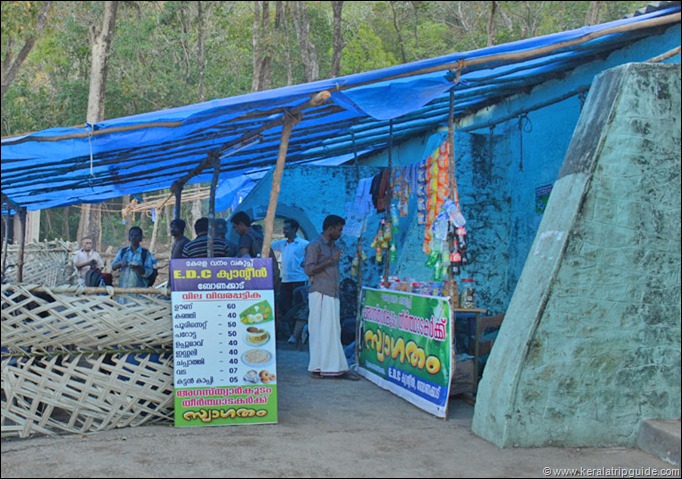
There is another canteen at Athirumala base camp. Canteen serves basic vegetarian food and tea/coffee. This canteen opens at 6am and closes at 8:30pm.
There are a number of forest camps along the trekking trail and are located near water streams. In case of emergency, you can approach them.
Location Map
Trivandrum city to Bonacaud roadmap is given below,
The following map shows the trekking path from Bonacaud to Athirumala (waypoints indicated are explained in the tables given in trekking experience section),
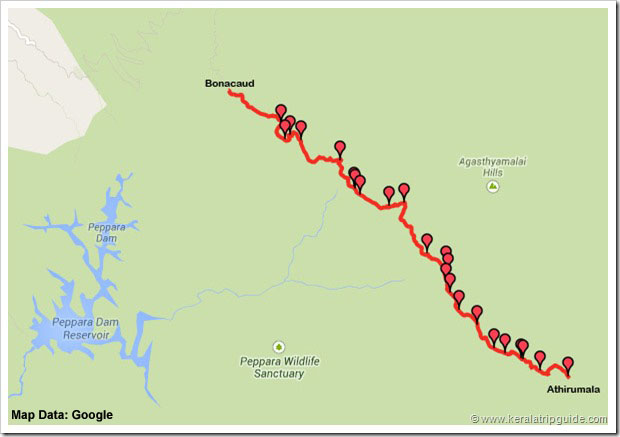
The following map shows the climb from Athirumala to Agasthyakoodam peak,
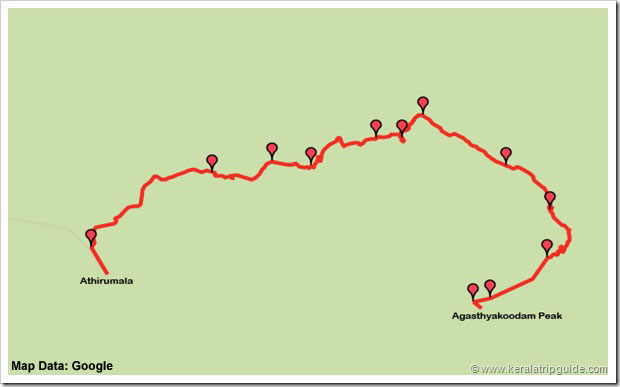
Agasthyakoodam Wildlife
Forests around Agasthyakoodam has a rich wildlife ecosystem. Even the Bonacaud entry point has plenty of wildlife. I think forest department scares away animals from the trek trail during the 2 month trekking season. Always be prepared for wildlife encounter especially in the morning and evening. Elephants may cross your path when you are near Athirumala camp. Elephants take this route to reach Peppara reservoir for water. We have also spotted bear droppings along the route between Athirumala and Agasthyakoodam peak. Keep your eyes open!
Agasthyakoodam area belongs to Neyyar wildlife sanctuary and Peppara wildlife sanctuary. There are around 43 species of mammals including tiger, leopard, sloth bear, elephant, sambar, barking deer, Nilgiri langur and Nilgiri tahr. It is also home to over 230 species of birds, 45 species of reptiles and about 40 species of fish.
As you trek towards the mountain peak, you will come across natural Bonsai trees! Trees around the peak are stunted due to the heavy winds lashing throughout the year. They are also often covered with lichens, mosses and ferns. You will also come across plenty of small insects along the trek trail.
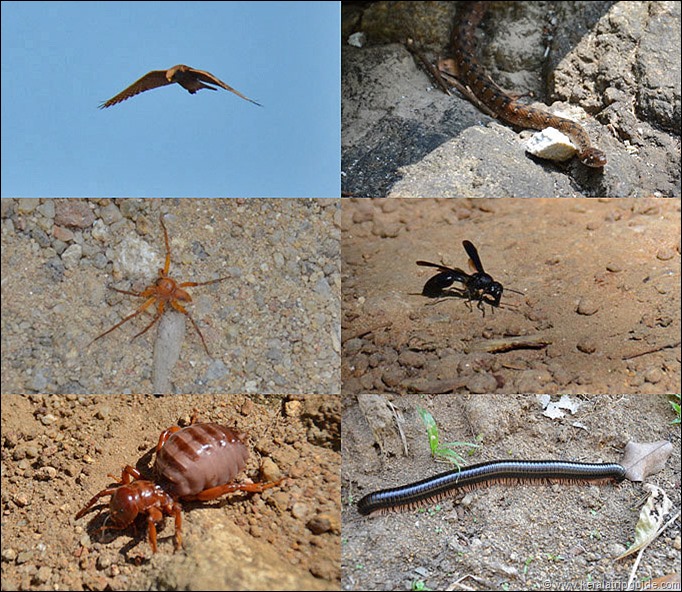
Agasthyarkoodam Trek Overview
Agasthyakoodam trek can be completed in 2 days or 3 days depending on your stamina and your interests. If you are looking to test the limits of your physical endurance and trekking is your main interest, I suggest you complete it in 2 days. If you are there to experience the forest or looking to explore the flora and fauna of the Agasthyakoodam, you need 3 days.
Between your starting point at Bonacaud and Agasthyakoodam peak, there is only one halting location. It is a small camp located at a place called Athirumala. It is located on the western valley of Agasthyakoodam peak and offers majestic views of the peak. Night stay here is safe since it is protected by trenches around it. The distance from Bonacaud starting point to Athirumala is around 15km and the distance from Athirumala to the mountain peak is around 5km. But note that during the 5km stretch you would be climbing almost 1000 metres.
Bonacaud to Athirumala Basecamp Trek (Day 1)
Whether you are going on a 2 day or 3 day trek, the first phase is always the same. You will start around 8am from the Bonacaud forest office after the formalities and then head towards Athirumala. You can reach Athirumala anywhere between 2pm to 6pm depending on how fast you trek, whether you take a bath along the way etc. Cover this stretch in slow pace and enjoy the nature and the water streams along the way.
Athirumala Basecamp to Agasthyakoodam and Return to Bonacaud (Day 2/3)
If you are completing the trek in 2 days, this is going to be a hectic day. You need to wake up around 5AM and get ready by 6AM. You then take a quick trek covering 5KM to the top. You should be on the top by around 10AM and need return by 11AM. You need reach Athirumala at 1PM and then after a quick lunch you need head back to Bonacaud by 2PM. Even then you need keep a steady fast pace to reach Bonacaud before nightfall (7PM).
If you are completing the trek in 3 days, you take the second day to visit mountain peak and return to Athirumala. On the 3rd day you can return back to Bonacaud just the same way you went to Athirumala. This gives you plenty of time to experience the forest, the mountain peak and the water streams along the way.
Agasthyakoodam Trek Experience (2 Day Trek)
Warning: The following section is full of spoilers! I strongly suggest you to avoid this section if you like surprises during your trek.
We usually go for a 2 day trek since we are always looking for a tough trek. But we also want to experience what the forest has to offer. We have been doing this trek for three years consecutively and hence has fine tuned our trek. This section may help you in planning your trek as per your needs.
After the check-in formalities at the Bonacaud forest station, you will be leaving for the Athirumala base station at around 8:30am. The forest beat officer (BFO) in charge will give a quick introduction of the trek and would remind you that you are going through a forest full of wildlife. There will be a number of other groups along with you and you can expect an overall strength of 40 to 60 people in the first batch leaving Bonacaud. One or two forest guards (from local tribal population) will accompany you along. Soon the group will get split into multiple small groups since everyone walks at a different pace. Usually the forest guards will be in front accompanying the first group. You will also encounter forest guards walking in both directions for random surveillance along the trekking trail.
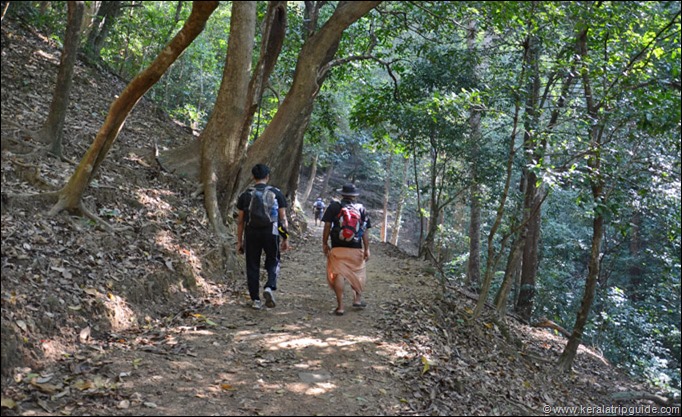
The initial part of the trek is through a think jungle with cool morning breeze flowing through it. If you look around you can get walking sticks left by earlier teams (These sticks can be a major help when you climb down from the peak on the next day). This stretch of around 4km consists of moist deciduous and semi evergreen forests and you will come across the Karamana river at the end of it. There is a small shrine dedicated to the mountain god (Maladevan) and a forest camp is located here.
The next stretch of about 5KM between Karamana river and Attayar river consists of semi evergreen forests and there are plenty of water streams along the way. Vazapaithiyar river is located somewhere in the middle of this stretch and it has an excellent waterfall for an energizing bath! Usually trekkers will have their lunch at Attayar river.
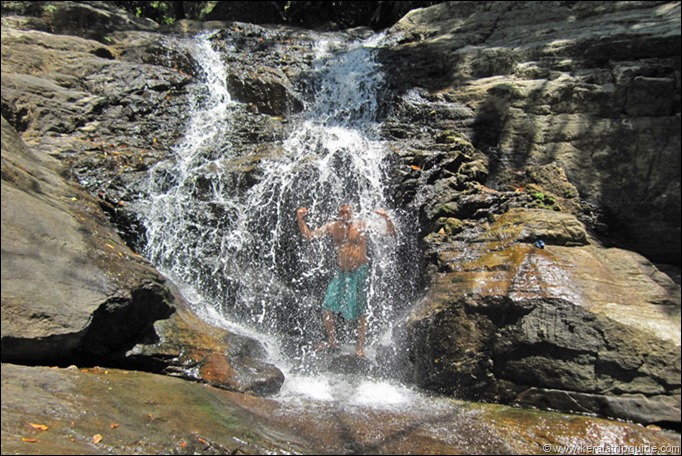
After Attayar river, you will be walking through grasslands for about 4KM. You will see a towering mountain range on the left and towards the middle of this stretch, you will get a glimpse of Agasthyakoodam on your front left. You will be passing through small forest patches spread across the grasslands and it offers a refuge from the merciless afternoon sun.
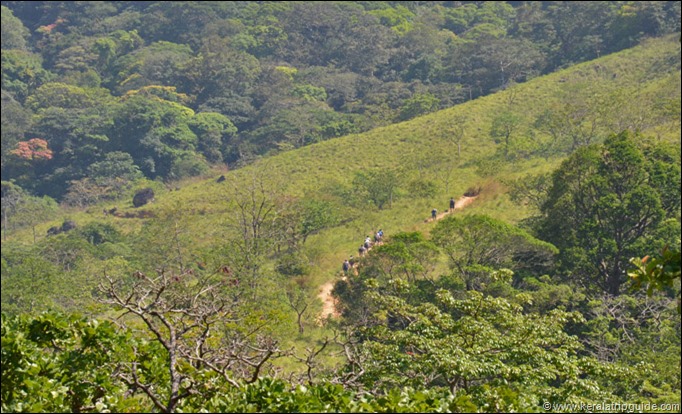
The final stretch to Athirumala involves a vertical climb through evergreen forests. When you reach Athirumala covering a total distance of around 14km, you will be rewarded with a majestic view of the Agasthyakoodam mountain!
The forest officer in charge will greet you and will ask for your entry pass. Show your entry pass at the canteen and they will issue sleeping mats (on twin sharing basis!) for you. Find a place for your sleeping mat in one of the temporary grass huts. Take rest, have a cup of hot tea and then take a bath in the stream located nearby on the eastern side! You can also walk to the southern side of the camp which leads to another grassland. From here you get a breath-taking view of the entire mountain range.
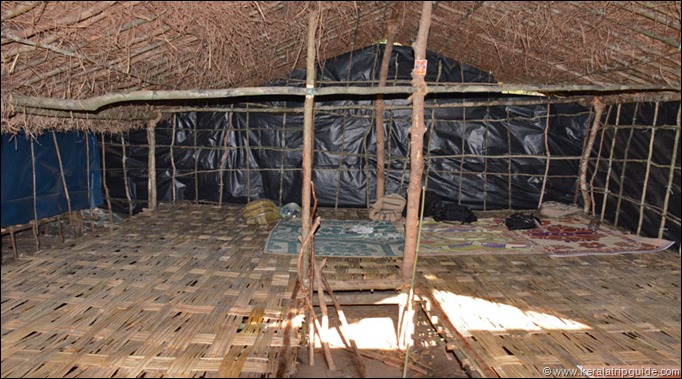
You need to buy food coupons at the Athirumala camp well in advance. Get your dinner coupon during tea time and then get your breakfast coupon during dinner. Similarly when you have your breakfast book your lunch. This is important since without prior booking/coupons you may not get any food from the canteen!
The following table summarizes the Bonacaud to Athirumala trek trail along with the distance walked, altitude and the time taken from the starting point at Bonacaud.
| Distance (KM) | Time From Origin (hour: minute) | Altitude in Metres | Landmark/Waypoint |
| 0.00 | 00:00 | 583 | Bonacaud forest office. Usually starts at 8:30am. |
| 1.51 | 00:30 | 578 | A small shrine of Agasthyamuni and forest guard tent (second camp since Bonacaud picket station) are located here. Earlier this camp used to be at Lathimotta protected by trenches. |
| 1.93 | 00:40 | 620 | This place is called Lathimotta. There is a diversion here towards Bonaforce waterfalls. This diversion is now closed to trekkers. |
| 2.19 | 00:50 | 631 | This is an ideal location for bird watching. If you plan for it, I suggest you reach this location as early as possible. |
| 2.58 | 01:00 | 665 | Now you are in the thick forest and the early sunlight sweeping in through the canopy gives a magical experience. |
| 3.29 | 01:10 | 649 | There is a large white tree close to trek path. We always halt here for photos. |
| 4.08 | 01:30 | 617 | You will cross the the mighty Karamanayar river here. You may halt here for a quick dip. The third forest guard tent is located here. There is also a small shrine of mountain god (Maladevan) under a huge tree. |
| 4.92 | 01:50 | 618 | This is an interesting stretch with dark open spaces with a number of large rocks. While returning you will reach here late and hence the place may seem scary. My biggest fear is an elephant standing in the disguise of a rock! |
| 5.08 | 01:55 | 615 | Now you are in an open area with plenty of sunlight. You can also see grasslands far away! |
| 5.83 | 02:20 | 572 | There is a diversion you can take at this stretch for a beautiful view. Climb up to your left for about 100m for excellent views of the mountains on the left. |
| 6.19 | 03:05 | 572 | You will cross the second river here known as Vazapaithiyar. It has a decent waterfall and we always halt here for a bath. The fourth forest camp is located here. [Halt : 30 minutes] |
| 8.16 | 04:00 | 554 | You can see grasslands to your right. |
| 8.63 | 04:15 | 585 | You will cross a small water stream here. |
| 8.90 | 04:20 | 562 | You will cross another small water stream here. |
| 9.19 | 04:27 | 572 | This is the last river (Attayar) you come across during your trek to Athirumala. Halt here for a dip in the water. This is also an ideal location for having your packed lunch. Fifth and the last forest camp before Athirumala base camp is also located here. Ensure that you fill your water bottles from here since water may be scarce till Athirumala. [Halt: 30 minutes] |
| 10.01 | 05:05 | 599 | You are now in the grasslands and the early climb has some excellent spots for bird watching. The mighty mountain range on your left side stretches up to Agasthyakoodam. Now you will thank me for advising you to get a good hat! |
| 10.44 | 05:20 | 652 | At this stretch of grasslands you can see the Agasthyakoodam peak far away in front of you to the left. |
| 10.90 | 05:30 | 693 | There are small forest stretches you need to cross even when you are in grasslands. This is the first forest crossing. |
| 11.61 | 05:50 | 769 | Usually there is a decent water stream here. Fill up your water bottles only if there is sufficient water flow in the stream. [Halt: 5 minutes] |
| 11.84 | 06:00 | 789 | This is the second forest stretch along the grasslands. |
| 12.43 | 06:30 | 867 | This is the end of the grasslands and it is time for the final climb to the base camp. You are now tired and this steep climb will test your stamina.
Now you will be entering thick forests. Please be aware that elephants frequently cross this path. |
| 12.51 | 06:35 | 875 | If you are lucky, you might find a water stream here. |
| 13.25 | 07:05 | 1006 | The climb is over and you are almost there. From here take a left turn to head towards Athirumala camp. Please be aware that elephants frequently cross this path. |
| 14.13KM | 7 hours 40 minutes | 1023 metres | Now you are at the Athirumala camp. The forest officer in charge will greet you and will ask for your entry pass. Show your entry pass at the canteen and they will issue sleeping mats (on twin sharing basis!) for you. Find a place for your sleeping mat in one of the huts. Take rest, have a cup of hot tea and then take a bath in the stream located nearby! |
Next day wake up by 5am and get ready by 6am. Give the food coupons you have taken on the previous day and collect your breakfast parcel. Leave towards peak by 6:30am.
This initial stretch is through dense evergreen forests and you will be crossing a number of water streams. If you are lucky, you may come across monkeys, peacocks and elephants along this path. After walking for around 1.5km you will come across a giant rock on the right side. Climb on it to get a mesmerizing view of the valleys below and of the Agasthyakoodam peak. It is a perfect spot to have your breakfast and wait for the first sunrays to appear behind the peak.
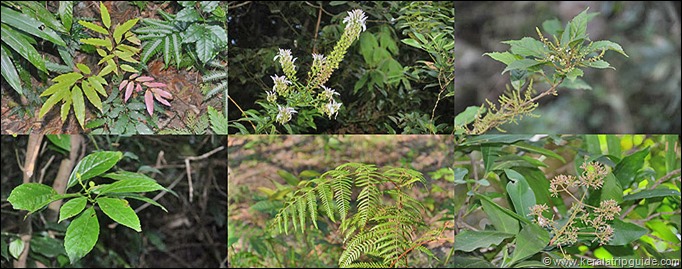
It is easy to miss the trekking path along this stretch. Always look for yellow arrows marked on the rocks and it can be huge help in keeping you along the trek trail. During this stretch you will be crossing over to the eastern side of Agasthyakoodam. At around 2.5km, you will come across a huge rocky area with a small water stream running through the middle of it. Never walk too close to the cliff as the wind may throw you over it!
You need to cross over the stream and climb up on the other side. Then turn right and walk over the ridge to reach a huge open space. From here you get the entire view of Mundanthurai tiger reserve. This place is known as “Pongalappara” and devotees cook rice offerings here. Walk across this rocky plains and head to west to start your final climb to the peak (approximately 2km from here).
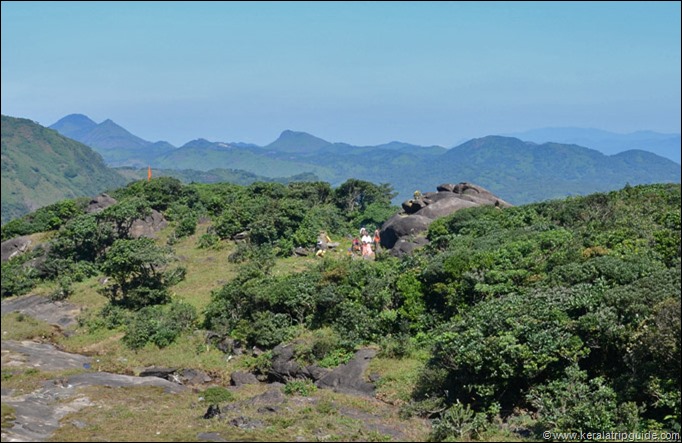
The temperature drops as you climb and and you will cross thick evergreen forests along this route. It is popularly known as “A/C Vanam” (A/C Forest). This place is treacherous during rainy season and as you reach towards the top, this climb becomes progressively difficult. Finally you will come across rocks which are nearly vertical. There are metal and plastic ropes available for the final climb. If you have fear of heights, climbing this would be tough.
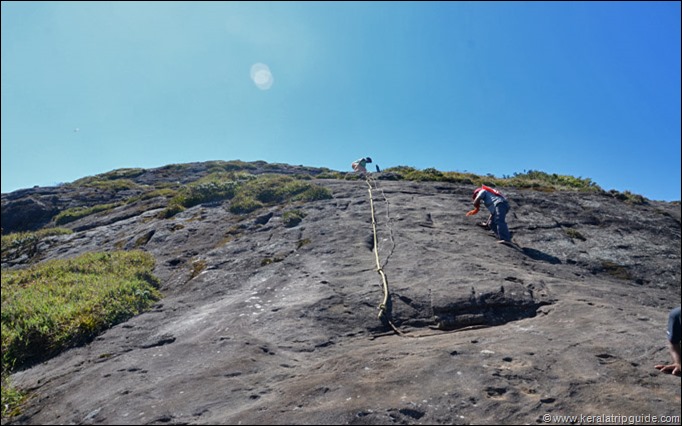
As you look down, you will be blown away by the vastness of the valleys and the mountains below. You will also suddenly notice another majestic mountain range which seems to have magically appeared from nowhere! This mountain range of 5 peaks is known Ainthuthalai Pothigai.
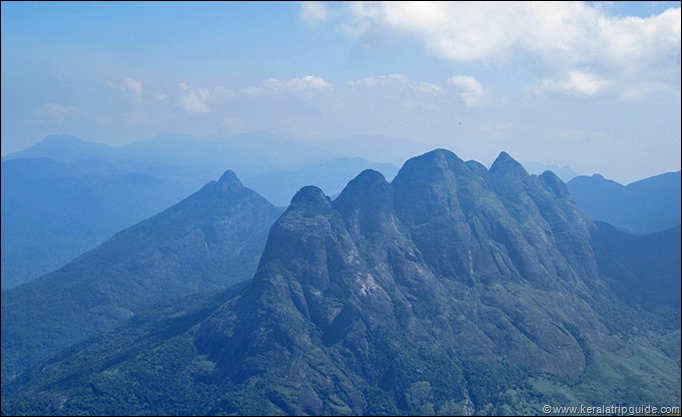
As you reach the top, the first thing you notice is the ferocious winds at this height and if you are not careful, you might fall. Agasthya shrine/idol is located in the middle of a small forest on the peak and hence is protected from the wind. As you spend time here, you realize that you should have attempted this trek much earlier!
The following table summarizes the Athirumala to Agasthyakoodam Peak trek trail along with the distance and the average time taken from the starting point at Athirumala.
| Distance (KM) | Time From Origin (hour: minute) | Altitude in Metres | Landmark/Waypoint |
| 0.00 | 00:00 | 1023 | Athirumala base camp. |
| 0.20 | 00:10 | 1036 | Take the right turn towards Agasthyakoodam. Pilgrims perform worship at this junction. |
| 1.01 | 00:35 | 1109 | Small stream of fresh water which passes through the eastern side of base camp. The forest here is thick and there is plenty of medicinal plants along the way. |
| 1.42 | 00:50 | 1127 | Another water stream along the way. |
| 1.67 | 01:00 | 1175 | There is a giant rock on the right side which you can climb. This offers breath taking views of the valleys below. Wait here to watch the magic of sun rising behind Agasthyakoodam peak! You can also see Athirumala base camp from here. [Halt: 15 minutes] |
| 2.35 | 01:50 | 1323 | Another rocky area perfect for some rest! Note that this is bear territory, so always walk in a group. |
| 2.62 | 02:05 | 1349 | This is vast expanse of rocks with a small stream and a small fresh water pond. Devotees usually take a bath from here. This is the last source of fresh water, so fill your water bottles! From here you need to climb to the left. |
| 2.83 | 02:15 | 1404 | The climb leads to a ridge which separates Tamilnadu from Kerala. Mobile phone signals are available here. From here you can see the vast forest ranges of Mundanthurai tiger reserve. |
| 3.33 | 02:30 | 1447 | This is last valley before the final climb to the peak. Devotees perform a form of worship known as “Pongala”. This involves cooking of a rice based dessert called “Payasam”. This place is popularly known as “Pongalappara” (Pongala Rock). |
| 3.74 | 02:55 | 1527 | This is one of the first treacherous rock formations. The trek becomes difficult from this point. |
| 4.28 | 03:20 | 1683 | This is first near vertical climb over the rocks. During rainy season, it is almost impossible to climb above this section. In some places you might need to crawl up. |
| 4.70 | 03:50 | 1837 | This is the second and the last steep climb. There are steel ropes and plastic ropes here for support. Alternately you can crawl up! |
| 4.80KM | 4 hours | 1849 metres | Now you are the Agasthyakoodam peak! You will find the idol Agsthyamuni surrounded by short trees which protects it. The wind on the top at times is very strong and be careful when you walk around. Enjoy the breath-taking views of the valleys and the mountains all around! |
If you are on the 2 day trek, you need to climb down from the peak before 11:30am and even then you need hurry to reach Athirumala before 1:30pm. You will be able to spend about 1 hour on the top.
Ensure that you return before 2pm from Athirumala to Bonacaud. Even then you need to walk fast to cover the return distance before nightfall. If you plan to take a waterfall bath along the way, you should return by 1:30pm.
Agasthyakoodam Trekking Tips
- Attempt Agasthyakkoodam trek only if you are physically fit. This is very important since you will be trekking through tough terrain for 50km in 2/3 days.
- Never trek alone. Even if you are going alone, ensure that you are near another trek team. This is very important since animals such as bear may attack when you walk alone.
- Always be alert and lookout for animals. Do not make loud noises. Animals such as elephants attack only when they are startled by close contact. So keep your eyes open.
- Since you carry only one bottle of water, keep it filled whenever you get a chance. This is very important for the last stretch of the trek since water is rare on the top.
- Keep an additional lightweight footwear (rubber sandals) in your bag. Most of the so called “trekking shoes” get damaged when you trek on rough terrain. You cannot trek barefoot unless you are used to it. Avoid the shoes getting wet.
- When you are at Athirumala camp, it can be pretty cold and windy during the night. The grass huts are pretty basic, so you need jackets/blankets, socks etc. to keep you warm.
- When you are at Athirumala camp, book your dinner during tea time and then book your breakfast during dinner. Similarly when you have your breakfast book your lunch. This is important since without prior booking you may not get food from canteen!
- When you return from Athirumala, don’t forget to return your sleeping mats and collect your entry pass from the canteen.
Summary
Agasthyakoodam is a trekker’s paradise. It is a trek which will test your stamina, provide you with beautiful views of almost all types of forests and best of all you can relax in a waterfall when you are tired. Trekking through the forests full of herbal plants and trees rejuvenates you. Attempt this trek only if you are physically fit. And finally,
Take nothing but memories, leave nothing but footprints!
Online Resources
Gavi Ecotourism and Trekking
Introduction to Gavi Eco-tourism
Gavi Eco-tourism
Gavi is a village in Pathanamthitta district of Kerala located deep inside the Ranni reserve forest. It is very close to Periyar tiger reserve and is blessed with a rich population of flora and fauna.
Gavi village is surrounded by cardamom plantations managed by Kerala Forest Development Corporation (KFDC), a department of Kerala Government. KFDC operates an ecotourism program with the permission of the forest department. In this article, we provide an overview of the KFDC Gavi Ecotourism program and various activities organized under the same. This is intended as a comprehensive resource for tourists visiting Gavi.
Gavi Eco-tourism
Gavi eco-tourism offers a day program or a stay over program. All these programs include buffet food and a number of free activities in and around Gavi. Free activities include jungle trekking, morning jeep safari and short boating trip on the lake.
A brief overview of these programs are given below,
Gavi Bus Trip – This trip is organized by Kerala Forest Department. They will take you in a mini bus around Gavi and other view points. The cost per person is Rs.300. There is no need for prior booking. You need to reach Vallakkadavu check post which is about 8KM from Vandiperiyar. The usual timings are 6:30am, 10:30am and 2pm. The safari duration is around 3 hours.
Gavi Day Program – This program is intended for tourists who are looking for a picnic to Gavi. It is very useful for people who are staying in and around Thekkady. Usual timings are from 7AM to 4PM. Breakfast and lunch are included in the package. Last time I checked there was no option to book online and hence you have to go Kumily (Thekkady) to book this. The Gavi booking office is located in Kumily town and the address is Holiday home building, Kulathupalam, Kumily (Phone: +91 4869 223270). The office is open till 7pm. The day program costs about Rs.1000 person and you can take your own vehicle to Gavi. Beware of touts trying to fleece unsuspecting tourists.
Gavi Stay Over Program – This consists of a 24 hour stay at Gavi. You can either stay at the Green Mansion Lodges (cheapest), or at the Swiss Cottage tents or up to 4 persons can stay in a Jungle Camp located further in the jungle after a short trek. All these programs can be booked online. The pricing is upwards of Rs.2000 per person on twin sharing basis. For children between 6 to 12 years, half price is charged.
Green Mansion Lodges is located near the Gavi reception while the Swiss Cottages are located about a hundred metres or so from the reception on the other side of the Gavi dam.
Swiss tents offer an exciting stay since it is surrounded by electric fence to protect you from wandering elephants. The forest tent provided to us was neat and clean; mineral water bottles and other basic necessities were already arranged in the tent. A tea kettle and hot water facilities are also provided. The tent also had a proper attached toilet. Tents are located on the river banks and offers excellent views of the lake. You could spend hours relaxing in the chairs provided outside the tent. If you are lucky, you may come across monkeys, deer etc. when you wake up in the morning!
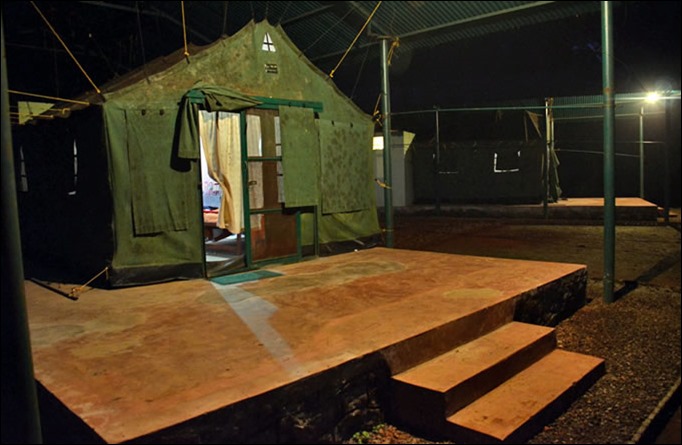
Before you plan your trip, please call KFDC to get up to date information on the programs. Tariff and availability of packages change frequently. Up to date information is also usually available on the KFDC Gavi Website. For a stay over trip, the best time to arrive at Gavi is around 2pm. Ensure that you have your lunch at 12:30pm from Vandiperiyar town before leaving towards Gavi. This way you can avoid the day trip crowd.
Booking for Gavi Eco-tourism Programs
The procedure given here are for stay over programs. For day trip programs usually you need to pay while getting the entry pass on the day of your travel.
You need to pay the entire tariff for the stay over programs up front by transferring money to KFDC bank account in Vandiperiyar. The cancellation charges are pretty high. Minimum cancellation fee is 10% and if you cancel within 2 to 5 days of your visit, you will loose 50% of your money!
First call up KFDC and ask for the booking procedure. Currently there is an option to book online and pay using your bank account or credit card. Earlier they used to give the bank account details to which you can do a SWIFT transfer of money. Usually adding a third party for a swift transfer in a bank account takes some time. Following are the bank details for transfer (disclaimer: double check the account details with KFDC),
KFDC, Account No: 362801010021042, Union Bank of India, Vandiperiyar. The IFSC code is UBIN0536288.
On the previous day of your visit to Gavi, call up Gavi reception numbers and inform them your vehicle number. This is very important since they need to dispatch the entry pass(with your vehicle number) well in advance to the Vallakkadavu forest check post. Without an entry pass, they won’t let you in!
Facilities/Shopping at Gavi Eco-tourism
There is a small eco-shop at the Gavi KFDC reception centre. From here you can buy sandal wood, sandal oil, cardamom, pepper, lemon grass oil, eucalyptus oil, vanilla extract, greeting cards, trekking bag, rain coat etc. There is also a small library here and the reception area is decorated with an excellent set of photos showcasing the wildlife in Gavi.
Only BSNL mobile coverage is available in Gavi. Gavi village is located very near to the eco-tourism spot, but note that there are no other facilities available at the Gavi village (apart from the small village canteen)!
Getting to Gavi
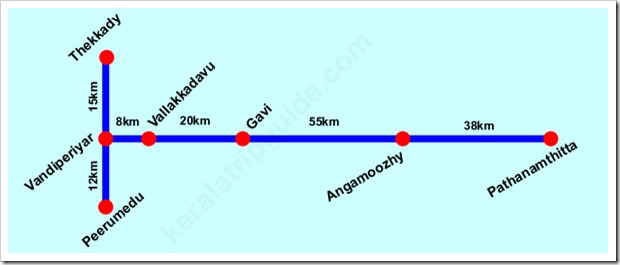
Gavi eco-tourism reception, Gavi village, Gavi lake, Gavi dam and Sabarimala viewpoint, all are located very near to each other.
There are two roads leading to Gavi village. You can either approach it from northern side from the Thekkady road near Vandiperiyar or you can approach it from Pathanamthitta via the Angamoozhy village. Gavi is located about 55KM from Angamoozhy and about 28KM from Vandiperiyar. When you visit Gavi eco-tourism, you need to enter from the Vandiperiyar side since your entry pass is dispatched to the Vallakkadavu check post along this route.
Since Vallakkadavu belongs to Periyar Tiger Reserve (PTR), there are restrictions on vehicle entry. Only vehicles with prior permission are allowed to cross the Vallakkadavu check post. This check post is located about 20KM from Gavi and about 8KM from Vandiperiyar town.
The entrance from Angamoozhy village via the Kochandi check post was open for public till recently since it didn’t belong to the Periyar Tiger reserve. But all that changed once Gavi was featured in the popular Malayalam movie, “Ordinary”. Storyline of this movie features the bus plying through this route. There was a sudden influx of wandering tourists through the Angamoozhy side to Gavi. To limit environmental damage, forest department introduced restrictions on vehicle entry along this route. Now only a limited number of private vehicles are allowed entry via Kochandi check post and that too between 6AM to 12PM. It seems inevitable that this route would be permanently closed to tourists, thanks to the craze generated by the movie. Note that vehicles entering from Angamoozhy are not supposed to exit from Vallakkadavu.
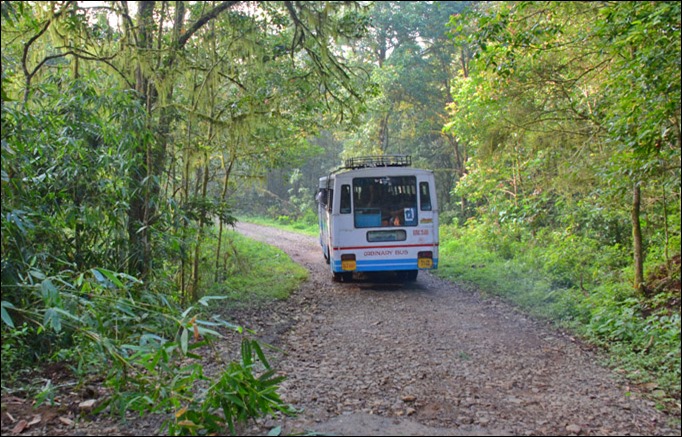
The entry fee at Angamoozhy Kochandi check post is Rs.50 for car. At Vallakkadavu check post, there is a per person entry fee of Rs.25 and per vehicle entry fee of Rs.50. You also need to pay Rs.25 per camera.
The road from both sides offer excellent opportunity for wildlife watching. Drive slowly at around 15-25km/hr. and watch out for wildlife on the land and on the trees. Also slow down at blind curves since there is a very high chance of encountering wildlife.
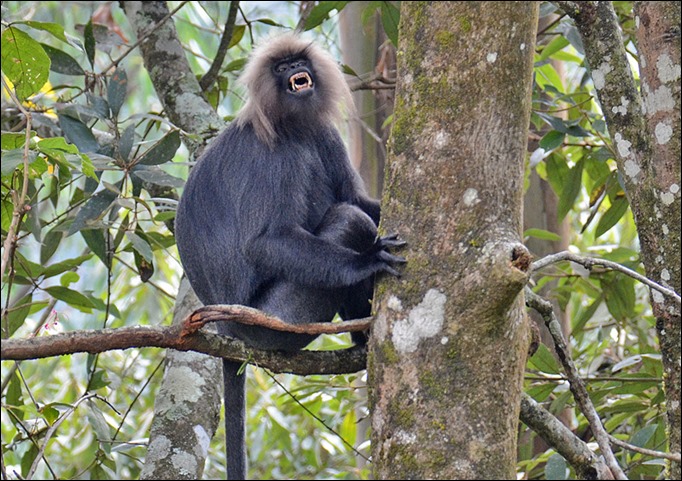
Service at Gavi
When you reach Gavi, park your car near the lake (after the Gavi dam) and proceed to the reception area on the right of the road. All members of your team are supposed to sign the entry register and you also need to show your ID proof. You will be given an instruction leaflet and entry coupons. You will also need to sign an exclusion of liability form (Gavi eco-tourism will not be liable for any injury or accidents due to wildlife encounter).
After the check-in formalities, a guide would be assigned to you. For the next 24 hours, this guide will be with you wherever you go in Gavi. Our guide was very friendly and he had over 10 years of experience on the job. We had a wonderful time with him.
Gavi canteen and boats are located on the opposite side of the reception building. There is a beautiful garden on the road side and you need to go through a tunnel decorated with a flowering plant called Clock Vine(Thunbergia mysorensis) to reach the canteen. This plant attracts a large number of small beautiful birds and combined with their sounds the whole place feels magical!
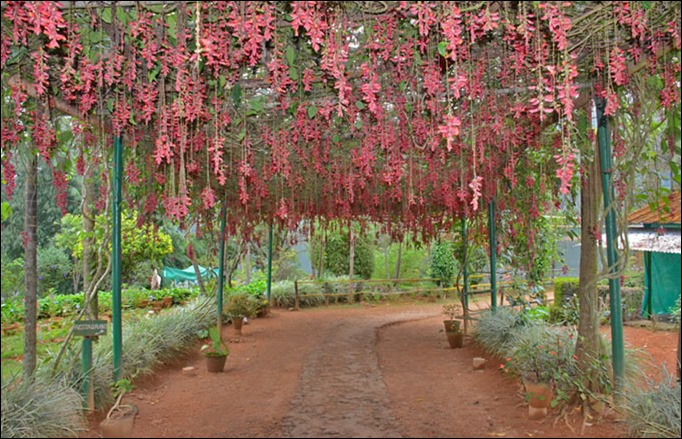
Canteen serves non vegetarian food for dinner and vegetarian food for lunch. Dinner consists of chicken soup and sumptuous non vegetarian buffet. Buffet breakfast consists of bread toast, uppuma, aval with banana, omelette, pineapple/grapes etc. Buffet vegetarian lunch features over a gazillion vegetarian dishes!
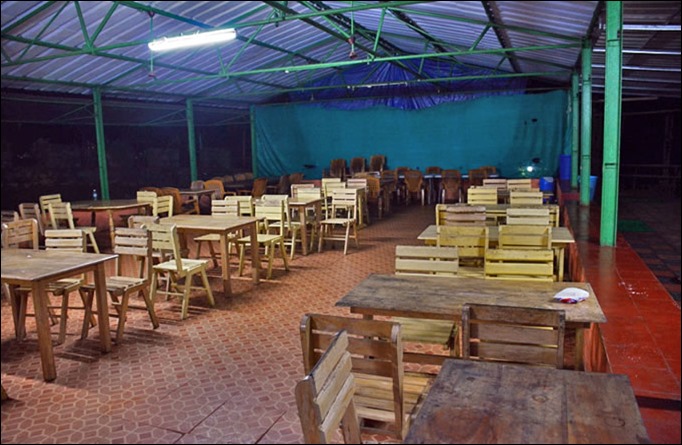
Terms and Conditions of Gavi Eco-tourism
These are the terms and conditions written in the instruction leaflet given to you during check-in,
- Consumption of liquor is prohibited in Gavi and intoxicated won’t be taken for any activities.
- Avoid smoking inside the restaurant.
- Avoid bringing food from outside.
- Follow the instructions of the guide. Please remember he is guide, not servant.
- Avoid carrying anything while boating.
- Keep silence – you are in a reserve forest.
- Avoid music system and sound box.
- No outdoor programs between 6PM and 6AM.
- Loss to government properties, if any, will be recovered as assessed by the management.
- Food will be served only in the restaurant.
- Stick to the dining time.
- Checkout time: 24 hours or 2pm on next day, whichever is earlier.
- Please note that you are in an eco-tourism centre, not in a luxury hotel. Expect minimum facilities.
- Leave only footprints and take away memories only.
- Kindly co-operate with us to keep the environment clean and undisturbed.
Activities at Gavi
All KFDC Gavi programs comes with a number of free activities which is included in the package. These include,
Boating In Gavi Lake – Your guide will take you on a short boating trip around the lake. Life jackets are mandatory and brace yourself for a surprise in the middle of the boating! These paddle boats are eco-friendly and offers a silent way to experience Gavi lake. Getting into the paddle boat can be tricky, especially for families with small children. Always ensure that boat is steady and weight is balanced along the boat.
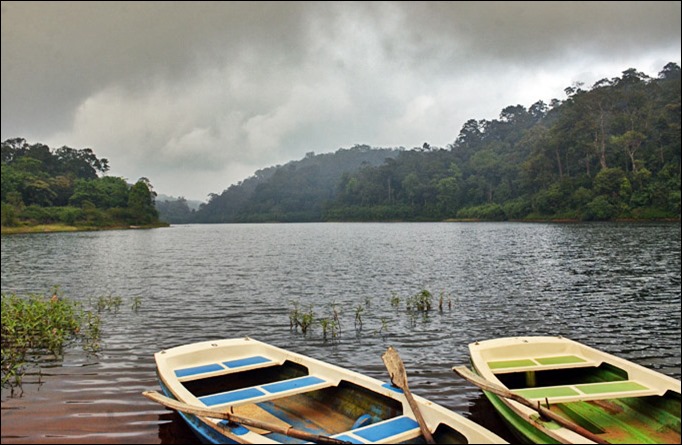
Gavi Trekking – There are multiple trek routes around Gavi. Talk to your guide for details of these treks. It usually takes around 2 to 3 hours. There are around 25km of trekking path in and around Gavi. Usual trek path goes around the jungle on the other side of the lake returning back to the main road and then crossing over to the Sabarimala view point. You will come across plenty of wildlife if you take a silent walk. Elephant encounter is almost guaranteed!
When you go on the trek, always stick with the guide and follow his instructions. Never make loud noises. Elephants can be deadly if you are too close to them and in a thick jungle it is easy to miss them until you are too close to them. When you are near an elephant herd, they usually give you warning with a trumpet sound and you should gradually move away from them by walking backwards. Never use flash when you are photographing an elephant herd in close range.
Jeep Safari to Angamoozhy – KFDC organizes an early morning jeep safari as part of the stay over program. Get ready by 5:45am so that you can leave immediately when the jeep is available. The safari is over 2 hours and it passes through Gavi village, Kochupamba etc. towards Angamoozhy. They usually cover about 15 to 20KM along this stretch. The jeeps can be converted to open jeeps and you can stand to get a better glimpse of the wildlife around. Again elephant sighting (usually large herds) is almost guaranteed. While returning from the safari, they usually stop at a small tea shop in Gavi village. Jeep drivers expect tip and are usually friendly and helpful.
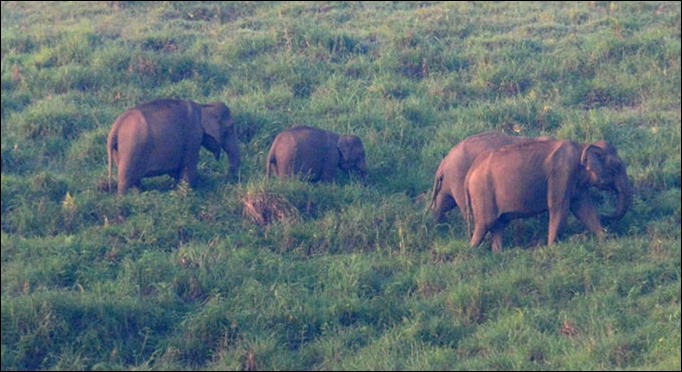
Visit to Sabarimala View Point – Sabarimala view point is very close to the Gavi reception building. You can either visit the place as part of your trek or just before you leave Gavi. The viewpoint is located on the top of a meadow and you need to walk uphill for about 10 to 15 minutes. Sabarimala can be seen far away with Ponnambalamedu meadow on the left and pullumedu meadow on the right. However visibility is poor due to the mist present all around the day. From here you can see the road you took from Vandiperiyar to reach Gavi. Binoculars would be very handy at this spot!
Visit to Animal Museum – There is an animal museum nearby. We never got time to visit it!
We also noticed that the is an eco-tourism based boating program in Kochupamba. But I am not sure whether it is operational. Ask at reception for details of these. The addition of these areas to Periyar Tiger Reserve seems to have affected expansion of eco-tourism projects.
Gavi Location Map
The following map will give you an idea about Gavi geography and where activities are organized.
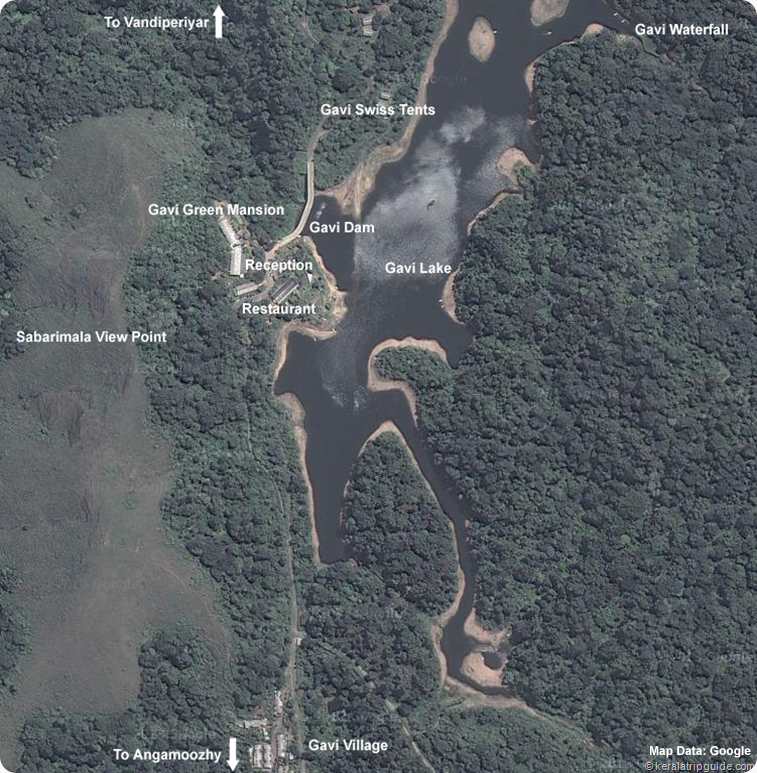
Gavi Wildlife
Gavi is part of Periyar Tiger Reserve. This is part of a continuous forest area covering a large area from Thekkady to Agasthyarkoodam forests in Trivandrum district. There is a large population of elephants in Periyar Tiger Reserve. There are over 35 mammals in this forest. Some of them are: elephant, tiger, gaur, sambar, wild pig, Indian giant squirrel, Travancore flying squirrel, jungle cat, sloth bear, Nilgiri tahr, lion-tailed macaque, Nilgiri langur, Salim Ali’s fruit bat, stripe-necked mongoose, Malabar giant squirrel, barking deer, and Nilgiri marten.
There are more than 250 species of birds recorded around the area. Some of these are: great Indian hornbill, Malabar grey hornbill, Malabar whistling thrush, blue winged parakeet, white bellied fishing eagle, brown fish owl, forest eagle owl, white shouldered kite, crested serpent eagle, parakeets, bulbuls, Wayanad laughing thrush, skylarks and pipits, sunbirds, mynas, woodpeckers including great black woodpecker, kingfishers, flycatchers etc.
Gavi is also home to over 50 species of reptiles, 40 species of fish and a large species of insects including over 150 species of butterflies. Keep your eyes and ears open to catch a glimpse of them! Gavi is also rich in flora with over 170 species of grass and over 140 species of orchids.
Gavi Travel Tips
- If you plan to stay over at Gavi, don’t go for all activities offered as it makes the stay a hectic one. Either stay for 2 days or skip the jeep safari or the trek. This way you can experience the lake and the surrounding at your leisure.
- Avoid all sorts of outdoor activities between 6PM and 6AM. Always be alert when you are in Gavi since you are deep inside a tiger reserve! Never leave children unattended.
- Carry camera, binoculars and an extra pair of footwear/shoes. Carrying trekking shoes is highly recommended.
- Leeches are found in these forest year around. Always carry a small pouch of salt with you. You can use salt to eject biting leeches from your skin by pouring it over them. Never try to forcefully remove them as it causes long term bleeding.
- Avoid carrying alcohol to Periyar Tiger Reserve. It is banned in almost all forest areas. KFDC seems to tolerate alcohol, but Kerala forest department hates it.
- During winter, it could be cold. A jacket is highly recommended.
Gavi Village
There are about 1500 people living in and around Gavi. A large number of these people are Tamil refugees who settled in India as part of the Sirima-Shastri Pact signed in 1964 by India and Sri Lanka. Almost all of them worked on the cardamom plantations in Gavi and Pachakkanam. KDFC later took control of these plantations and various factors including mismanagement lead to losses.
It is a sad fact that even after 4 decades, refugees are struggling for survival. Recent inclusion of Gavi and surrounding areas into Periyar Tiger Reserve made their life much more difficult since even their right to travel is pretty much restricted. KFDC eco-tourism provides much needed revenue and job opportunities for the local population.
Summary
Gavi is an ideal destination for nature/wildlife enthusiasts. It offers you a getaway from all your daily grind, providing you only the basic material comforts. You will return with happy memories sure to last for a long time. But if you are looking for 5 star comforts with a swimming pool, avoid it! 🙂
Online Resources
Book Review: Freakonomics by Steven Levitt
Introduction
Freakonomics is a collection of interesting problems and a look at how statistical methods lead to surprising answers to these problems. Since the author (Steven Levitt) is an economist, he looks at them with an economist’s eyes focusing on the incentives that drive people behind these problems. It obviously helps to sell the book when the problems and solutions are “controversial”. For example, Steven statistically concludes that one of the major reasons for reduction in crime rate in US is legalized abortion! Such conclusions obviously generate a lot of heat.
Book Review: Freakonomics by Steven Levitt
Freakonomics is written by economist Steven Levitt and journalist Stephen Dubner. It has sold over 4 million copies worldwide. It is based on various articles and papers written earlier by Steven Levitt. Each chapter deals with an interesting question,
- What do school teachers and sumo wrestlers have in common?
- How is Klu Klux Klan like a group of real estate agents?
- Why do drug dealers still live with their moms?
- Where have all the criminals gone?
- What makes a perfect parent?
These questions and the statistical solutions to these questions are pretty interesting. The question about Klu Klux Klan and real estate agents is interesting and the conclusion about “experts” hoarding their “specialized knowledge” is something I could closely relate to. For example, doctors have been using “specialized knowledge” to confuse and fleece patients. However the Internet has been a major liberator from such “experts” since much of the “specialized knowledge” is publicly available. We also tend to overestimate the “specialized knowledge” available with “experts”.
The book also has a bonus matter section with additional questions and analysis. This sections explore questions such as why we vote and the economics behind gift cards. This section is followed by a Q&A session with the authors.
I personally think that one of the biggest contributions of this book is that it forces people to be critical of the things that are pushed to them as good or as essential. For example, take the case of vaccinations (this example is NOT from the book). It is almost always projected as good thing. But in reality, there is a trade off to be made between the known and unknown side effects of a vaccine against the risk of contracting a specific disease. If there is a 1% chance of contracting a specific disease and in contracted patients if there is 1% chance of death, is vaccination against that disease worth the 0.1% side effects and the possible long term impact on health?
Take another example of global warming or tree conservation (again NOT from the book, however a new book named Superfreakonomics seems to address these topics). Both these are given much more importance than they actually need. It is always important to ask the question, who actually benefits from the scare of global warming or the scarcity of cheap raw material such as wood (trees) which can be easily replenished?
One of my favourite chapters is the one dealing with parenting. I see parents all around me who try everything in their power to make their children better. I have always suspected that parenting has a lesser influence on a child than his genes and his peer group. It appears that what matters in the case of a child is how parents live/what parents are NOT what parents do!
Freakonomics is an interesting read. The authors have done a good job in making even the statistical part seem interesting. The book encourages us to be alert on what we do and what others do and look for reasons behind it.
The Q&A section at the end contains a pretty argument as to why you should read this book!,
Q: Am I worse off for never having read Freakonomics? – Terry
A: Sadly, yes. Independent testing has shown that people who read Freakonomics have sweeter-smelling breath, better posture and more interesting dreams. Also women feel no pain during childbirth; male readers find that their sperm swim faster.
My Rating: 8/10. An excellent book of interesting problems and interesting trivia. If you are a blind follower of “experts”, this is an eye opener!
Online Resources
Gavi Ecotourism
Introduction to Gavi Ecotourism
Gavi Ecotourism – Contents
Gavi Ecotourism is a tourist program conducted by Kerala Forest Development Corporation (KFDC) near Gavi village in Periyar Tiger Reserve forest. This program consists of multiple events conducted in and around Gavi dam, Gavi lake and the adjacent forest areas. KFDC programs at Gavi are,
- Day trip to Gavi – This is a day trip from 6AM to 4PM. Currently there is no option to book online and you will need to go to Kumily(Thekkady) to book this. This is usually opted by tourists coming staying in Thekkady. For more details, check with KFDC contact numbers.
- Green Mansion Lodge Stay – Overnight stay at Gavi in rooms. This is quite near to the Gavi lake.
- Swiss Cottage Tent Stay – Overnight stay in tents which are protected by electrified fence. More privacy and a relaxed forest stay is offered here. This place is located before Gavi dam.
- Jungle Camping – Up to 4 persons can stay in deep jungle after trekking to the location.
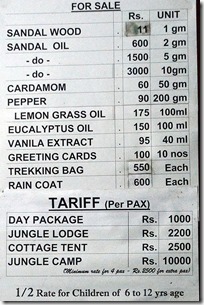 All programs include food and a number of free activities (trekking, jeep safari and boating). Up to date details of these programs including tariff are available at the KFDC Gavi website. Gavi has no other facilities (apart from a small local hotel in the nearby Gavi village). Also before you plan your trip, always call up the KFDC contact numbers to confirm program details.
All programs include food and a number of free activities (trekking, jeep safari and boating). Up to date details of these programs including tariff are available at the KFDC Gavi website. Gavi has no other facilities (apart from a small local hotel in the nearby Gavi village). Also before you plan your trip, always call up the KFDC contact numbers to confirm program details.
Usually you need to pay the room tariff up front by transferring money to KFDC bank account and cancellation charges are pretty high. You also need to inform them about your vehicle number one day before your arrival at Gavi. The per person tariff is around Rs.1000 for day trip and Rs.2000 for overnight stay.
Facilities at Gavi include the KFDC restaurant, a small eco shop at the KFDC reception from where you can purchase a limited set of items (see photo), a small library and cell phone coverage only for BSNL mobiles.
Gavi Ecotourism – Getting There
Gavi is a forest village inside Periyar Tiger Reserve and is part of Pathanamthitta district. It is accessible by road from northern Vandiperiyar town and from southern Angamoozhy village. 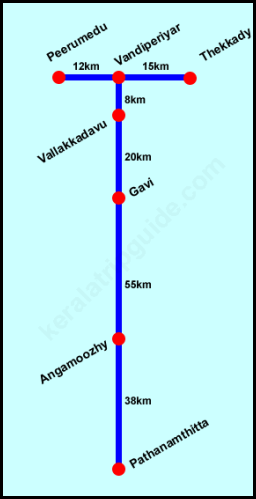 The Gavi ecotourism spot which includes the Gavi dam and Gavi lake is located about 500m away from the Gavi village. Gavi is located about 28KM from Vandiperiyar town and about 55KM from Angamoozhy village.The entrance from Vandiperiyar side is very restricted. Only vehicles with prior permission is allowed to cross Vallakkadavu check post located about 8KM from Vandiperiyar and about 20KM from Gavi. This restriction is due to the fact that forest areas here belong to the Periyar Tiger Reserve.
The Gavi ecotourism spot which includes the Gavi dam and Gavi lake is located about 500m away from the Gavi village. Gavi is located about 28KM from Vandiperiyar town and about 55KM from Angamoozhy village.The entrance from Vandiperiyar side is very restricted. Only vehicles with prior permission is allowed to cross Vallakkadavu check post located about 8KM from Vandiperiyar and about 20KM from Gavi. This restriction is due to the fact that forest areas here belong to the Periyar Tiger Reserve.
The entrance from Angamoozhy historically has been much more lenient since it doesn’t belong to the Tiger reserve. However due to the sudden influx of tourists via Angamoozhy after Gavi was featured in Malayalam movie “Ordinary”, now entry restrictions are in place. Now only 10 vehicles are allowed entry during weekdays and 30 vehicles are allowed entry during weekends. This entry is only allowed between 6AM and 12PM. The vehicles entering from Angamoozhy are not supposed to exit from Vallakkadavu unless they are guests of KFDC (they issue exit and entrance pass for their guests). Forest department is also planning to completely block entry of private vehicles from Angamoozhy once forest department starts their own bus safari till Gavi. This sort of bus safari is usually complete waste of money as I have seen the same in Siruvani (Palakkad).
Gavi Ecotourism Distance Chart
| Vandiperiyar | 28 km |
| Thekkady | 43 km |
| Angamoozhy | 55 km |
| Pathanamthitta | 93 km |
| Alappuzha | 160 km |
| Cochin Airport | 164 km |
| Ernakulam | 170 km |
If you have booked a KFDC Gavi Ecotourism package, you are supposed to enter Gavi via Vallakkadavu check post. KFDC sends the entry pass one day before your arrival to the check post.
The entry fee at Angamoozhy Kochandi check post is Rs.50 for car. At Vallakkadavu check post the entry fee calculation is bit complex and it took the officer on duty sometime to calculate it! There is a per person entry fee (Rs.25 for adults and Rs.10 for children), vehicle entry fee (Rs.50) and then camera entry fee (Rs.25).
Activities at Gavi
KFDC organized programs consists of a number of activities. Usual activities include,
- Gavi Lake Boating – This is paddle boat trip to a nearby waterfall in the Gavi lake. life jackets are mandatory and the guide will take you in the boat.
- Trekking Around Gavi – There are around 25km of trekking path in and around Gavi. Usual trek path goes around the jungle on the other side of the lake returning back to the main road and then crossing over to the Sabarimala view point.
- Jeep Safari Along the Jungle Road – The early morning jeep safari is usually from 6AM to 8:30AM and covers Gavi village, Kochupamba etc. towards Angamoozhy. They usually cover about 15 to 20KM along this stretch.
- Visit to Sabarimala View Point – This is very close to the Gavi reception area and is a 15 minute uphill walk to a meadow. You can see Sabarimala usually partially hidden among the mist. Ponnambalamedu mountain can be seen on the left and pullumedu mountain can be seen on the right. You can also see the road to Vandiperiyar from here. Take a binocular if you have one.
- Visit to Animal Museum – There is an animal museum nearby. We never got time to visit it!
In addition to the above there are activities available near Gavi such as boating in Kochu Pamba lake and jungle stay. Ask at reception for details of these. It appears that the addition of Gavi into the Tiger reserve has put a brake on the expansion of eco-tourism activities.
The following map will give you an idea about Gavi geography and where activities are organized.
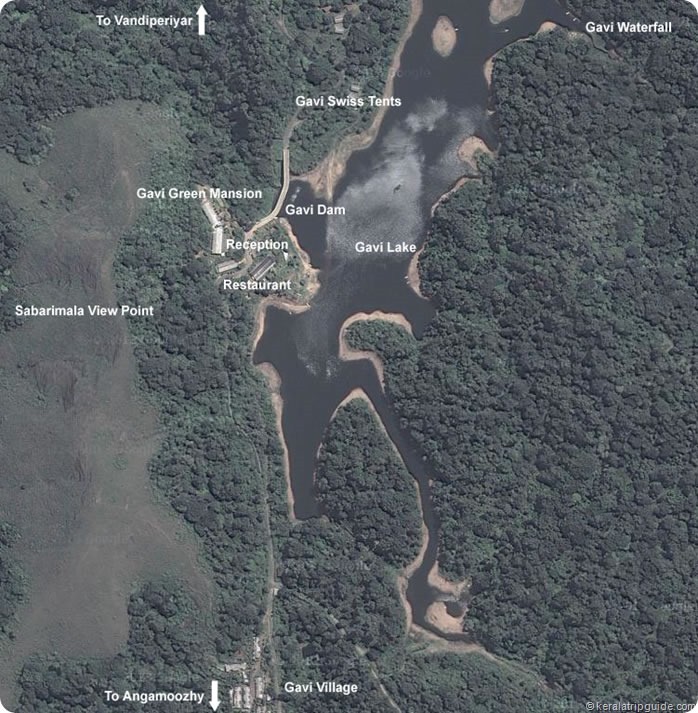
Gavi Wildlife
Gavi is now part of Periyar Tiger Reserve and there is abundant wildlife in and around this place. You can spot various exotic types of butterflies and insects if you look for them in the vegetation around. Always look at the tree branches for spotting monkeys, squirrels etc. Some of the commonly spotted animals in Gavi are,
- Malabar Giant Squirrels, Elephants, Sambars, Gaurs, Lion Tailed Macaque, Barking Deers, Mongoose, Nilgiri Marten, Civets, Bears, Wild Boars, Wild Dogs, Leopards, Nilgiri Tahr, Nilgiri Langur etc.
Commonly spotted birds in Gavi include,
- Great Indian Hornbill, Malabar Grey Hornbill, Malabar Whistling Thrush, Blue Winged Parakeet, White Bellied Fishing Eagle, Brown Fish Owl, Forest Eagle Owl, White Shouldered Kite, Crested Serpent Eagle, Parakeets, Bulbuls, Wayanad Laughing Thrush, Skylarks and Pipits, Sunbirds, Mynas, Woodpeckers including Great Black Woodpecker, Kingfishers, Flycatchers etc.
Gavi Trip Report – Swiss Tent Stay – November 2013
In November 2013, My brother and I decided to visit Gavi along with family. A week before our planned date I called up KFDC office at Gavi and asked for availability of tent accommodation. He replied that tents are available and in order to book them I need to transfer the entire tariff to their Vandiperiyar bank account. That seemed a bit scary, but there are no other options available at Gavi and since KFDC is a government run facility I decided to take the risk.
I made a NEFT bank transfer to KFDC bank account for booking 2 tents at Gavi and called up KFDC to confirm my stay. I was asked to call one day before our check-in date and inform our vehicle number. This is required for them to arrange vehicle passes at Vallakkadavu forest check post.
The bank account of KFDC, Gavi to which I made money transfer was,
KFDC, Account No: 362801010021042, Union Bank of India, Vandiperiyar.
The IFSC code is UBIN0536288.
Needless to say always double check the account details before you do the money transfer. The details given here are only for double checking what you heard from KFDC contact numbers!
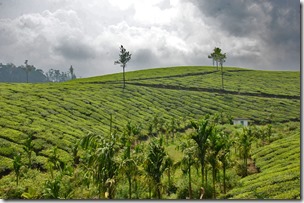 We started early morning from Ernakulum and headed towards Vandiperiyar. After a slow drive through scenic KK road and a quick visit to Pattumala church we reached Vandiperiyar just in time for lunch. Our check-in time at Gavi was 2pm and the package included evening tea, dinner, breakfast and lunch (next day). We had our lunch in Vandiperiyar and then proceeded to Gavi at around 2pm. At Vallakkadavu check post our entry pass was ready. We had to pay entry fee, vehicle fee and camera fee at the check post.
We started early morning from Ernakulum and headed towards Vandiperiyar. After a slow drive through scenic KK road and a quick visit to Pattumala church we reached Vandiperiyar just in time for lunch. Our check-in time at Gavi was 2pm and the package included evening tea, dinner, breakfast and lunch (next day). We had our lunch in Vandiperiyar and then proceeded to Gavi at around 2pm. At Vallakkadavu check post our entry pass was ready. We had to pay entry fee, vehicle fee and camera fee at the check post.
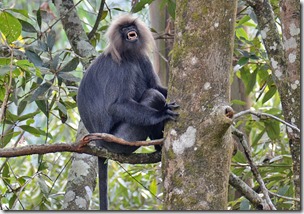 The 20km drive from Vallakkadavu to Gavi is through thick jungle which is part of Periyar Tiger reserve. This stretch offers excellent opportunity to see wildlife. After a couple of Kilometers, we spotted a single tusker elephant on the meadows to the left of the road. It was away and was partially hidden in thick undergrowth. We also spotted different types monkeys and came across beautiful butterflies.
The 20km drive from Vallakkadavu to Gavi is through thick jungle which is part of Periyar Tiger reserve. This stretch offers excellent opportunity to see wildlife. After a couple of Kilometers, we spotted a single tusker elephant on the meadows to the left of the road. It was away and was partially hidden in thick undergrowth. We also spotted different types monkeys and came across beautiful butterflies.
When we were driving to Gavi, a lot of tourists were returning from their day trip at Gavi in hired jeeps. One of the jeeps slowed down and the driver asked us in Tamil whether we had seen the elephant and where it was located. My brother replied in Tamil. The exchange went on for a while in Tamil and suddenly the jeep driver asked us whether we are malayalees in Malayalam and we replied – Yes! He literally did the face palm. His embarrassed reaction was quite amusing. He assumed we were Tamilians since our vehicle number started with TN!
The road here is narrow, but is in pretty decent condition. We went slow and reached Gavi around 3pm one hour late than our planned check-in time.
When you drive through forests, keep the speed low at around 15-25km/hr. This way you have a higher chance of spotting wildlife. Also slow down when you are at a curve and be prepared to spot wildlife just around the curve. Here is another technique I use when traveling with family. I ask my wife to look for wildlife in the trees on one side and my children to look at the trees on the other side. We have spotted lion tailed macaque, Indian giant squirrel etc. using this technique in most of our trips.
We parked our car after the Gavi dam and checked in at the reception counter. All of us had to sign in a register and the receptionist told us about rules and regulations in a tiger reserve. We were also given an instruction leaflet, entry coupons and was assigned a guide (Kannan). Note that you will be signing a exclusion of liability which means that Gavi eco-tourism will not be liable for any personal injury.
Kannan was from Gavi village and he had over 10 years experience as a forest guide. He was the best forest guide I have ever been with – knowledgeable, helpful, courteous and a true guide!
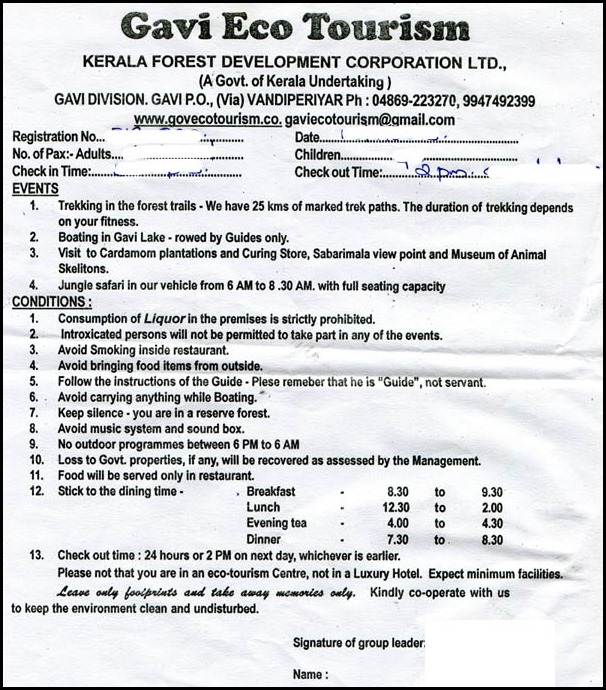
The Swiss tents were located away from the reception/canteen/boating area on the other side of the Gavi dam. We walked along the road to reach the tent area located on the right side of the road towards Vandiperiyar. Guide took us till the tents, gave us the keys and said he will be waiting for us at the reception area and recommended we should go on the boat ride.
The forest tent was neat and clean; mineral water bottles and other basic necessities were already arranged in the tent. A tea kettle and hot water facilities are also provided. The tent also had a proper attached toilet. All the tents faced the lake and you could spend hours relaxing in chairs provided in tents. I really wish I could afford spending a week here doing nothing other than reading and watching wildlife. If you are lucky you will be visited by deer, squirrels, monkeys and who knows even a leopard!
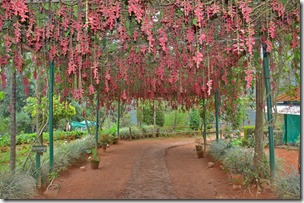 We quickly deposited our bags inside, got ready and was on our way back to boating dock by 4pm. We had tea and biscuits from the canteen. Canteen and boat dock is located on the opposite side of the reception building. There is beautiful garden on the road side and you need to go through a tunnel decorated with a flowering plant called Clock Vine(Thunbergia mysorensis) to reach the canteen. Whoever planted this is a genius since it attracts a large number of small beautiful birds and combined with their sounds the whole place feels magical!
We quickly deposited our bags inside, got ready and was on our way back to boating dock by 4pm. We had tea and biscuits from the canteen. Canteen and boat dock is located on the opposite side of the reception building. There is beautiful garden on the road side and you need to go through a tunnel decorated with a flowering plant called Clock Vine(Thunbergia mysorensis) to reach the canteen. Whoever planted this is a genius since it attracts a large number of small beautiful birds and combined with their sounds the whole place feels magical!
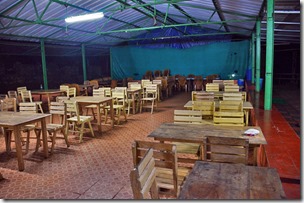 When we came out of the canteen, Kannan was ready with a paddle boat and life jackets! The paddle boat requires some patience to get in especially for families with children. Always ensure that boat is steady and weight is balanced on the sides.
When we came out of the canteen, Kannan was ready with a paddle boat and life jackets! The paddle boat requires some patience to get in especially for families with children. Always ensure that boat is steady and weight is balanced on the sides.
Boating in Gavi Lake
Since it was late, almost all of the day trip folks had left and there were only few guests for night stay. We were the only ones on the lake. Kannan was also an expert on the paddle boat and patiently answered all our questions and queries. The lake was calm and serene. The silence and the misty lake gives a heavenly experience if you are a nature lover.
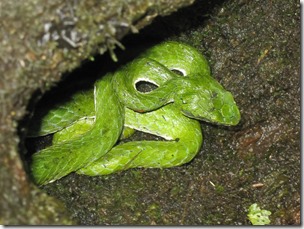 Kannan took us to a waterfall nearby on the lake and since we were alone, we decided to take a quick dip in the river. While walking to the waterfall, my daughter suddenly pointed us to a snake. This was my first encounter with green pit viper! Kannan told us that he will be in trance stage till it becomes dark and told us that getting bitten is fairly common when staying in the forest. This gave us extra motivation to get out of the waterfall before night fall.
Kannan took us to a waterfall nearby on the lake and since we were alone, we decided to take a quick dip in the river. While walking to the waterfall, my daughter suddenly pointed us to a snake. This was my first encounter with green pit viper! Kannan told us that he will be in trance stage till it becomes dark and told us that getting bitten is fairly common when staying in the forest. This gave us extra motivation to get out of the waterfall before night fall.
After the boating, we sat on the benches near the canteen and just spend our time in front of the pristine and serene lake. It is a shame that such views are now available only for a price!
At 7:15pm we were served with delicious chicken soup and was followed by a sumptuous non vegetarian buffet dinner. After dinner we went back to our tents since we were all tired after the long trip and boating.
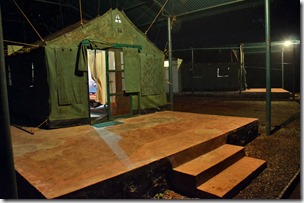 Kannan told us to be ready by 5:50AM for our 6:00AM jeep safari towards Angamoozhy (south bound).
Kannan told us to be ready by 5:50AM for our 6:00AM jeep safari towards Angamoozhy (south bound).
Before we slept we started hearing noises from the other side of the lake (the tents are adjacent to the lake). Our night security guy (John) came running to tell us that elephants are on the other side and we are safe since we are protected by the electrified fence. After he left, we went near the fence to see if we can get a glimpse of the elephant herd.
The elephants seems to have started crossing the lake and we could hear their breathing! Then we heard folks on the boat landing side making noises to scare the elephants away. This is required since the other area is not protected by electric fence. We went back to bed and heard various noises and howls till we slept. The tents are not for the weak hearted!
Gavi Jeep Safari
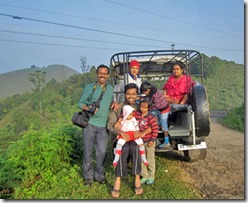 By 5:45AM we were all ready for a jeep safari and at exact 6AM Kannan was there with an open jeep. The jeep is hired by KFDC and is included in the package. However jeep drivers do expect tip and I always ensure that tip is proportional to their service. Kannan asked whether we want the jeep roof closed since we were with children and I noticed that our guide was very considerate and helpful.
By 5:45AM we were all ready for a jeep safari and at exact 6AM Kannan was there with an open jeep. The jeep is hired by KFDC and is included in the package. However jeep drivers do expect tip and I always ensure that tip is proportional to their service. Kannan asked whether we want the jeep roof closed since we were with children and I noticed that our guide was very considerate and helpful.
The open jeep ride was pretty exciting and we spotted multiple elephant herds along the way. We also came across a herd of gaurs on a meadow. The misty weather was the only disappointment. On the way back we got really lucky and spotted a big family of lion tailed macaque!
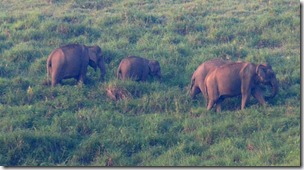 While returning from Safari, our driver asked whether we want to stop for tea at a shop. He slowed down the jeep but I replied that we would have our breakfast from the canteen. My wife later scolded me for being selfish since the stop was actually needed for the driver/guide. We bought some snacks from the only restaurant at the Gavi village on the way back.
While returning from Safari, our driver asked whether we want to stop for tea at a shop. He slowed down the jeep but I replied that we would have our breakfast from the canteen. My wife later scolded me for being selfish since the stop was actually needed for the driver/guide. We bought some snacks from the only restaurant at the Gavi village on the way back.
Gavi Jungle Trekking
After an excellent buffet breakfast consisting of bread toast, uppuma, aval with banana, omelette, pineapple/grapes etc. I set out with my brother and our guide (Kannan) for a trek. Our families went back to the tents for some rest.
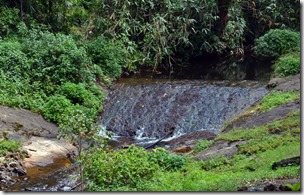 Gavi has around 25km of trekking path. The most preferred path actually starts from the other side of the lake after taking a boat from canteen area. This path is actually formed by elephants coming to the lake for water. We started our trek casually and Kannan told us more about the flora around this place. We also came across fresh elephant dung. On our trek we reached upstream of the waterfall in which we had bath on the previous day’s boating trip.
Gavi has around 25km of trekking path. The most preferred path actually starts from the other side of the lake after taking a boat from canteen area. This path is actually formed by elephants coming to the lake for water. We started our trek casually and Kannan told us more about the flora around this place. We also came across fresh elephant dung. On our trek we reached upstream of the waterfall in which we had bath on the previous day’s boating trip.
When you go on the trek, always stick with the guide and follow his instructions. Never make loud noises. Elephants can be deadly if you are too close to them and in a thick jungle it is easy to miss them until you are too close to them. When you are near an elephant herd, they usually give you warning with grunting sound and you should gradually move away from them by walking backwards. Never use flash when you are photographing an elephant herd in close range.
After an hour of trekking we came across a herd of elephants on our right side. We also met other trekking teams hiding and watching the elephant herd. All of us decided to move around the herd to get a good view. Then suddenly our guide indicated us to stop. He asked us to wait and then cautiously proceeded to the direction opposite to where the elephant herd was standing. He then indicated to join him without making any sound and then we noticed another herd of elephants coming from the direction that our guide has gone! Without our guide, we would have probably ended up right in front of these elephants!
After the elephant encounter we proceeded to the southern part of Gavi lake crossed over and then reached the main road. We crossed the main road then headed towards the Sabarimala view point. Even here you can spot wildlife and we spotted a Sambar. It was almost 1pm when we reached the view point. There was lot of mist and Sabarimala was faintly visible between Ponnambalamedu and Pullumedu. From view point it is 10 minute walk back to the Gavi reception area.
On the way back we spotted a structure which looked like a tree house but it was small and stood on the ground. We were curious as to what it is and Kannan told us that earlier there was no BSNL mobile tower and hence the staff used to climb up this structure to get mobile signal!
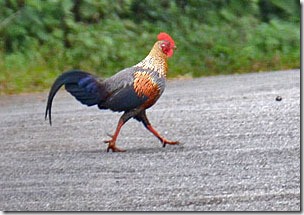 After a quick bath we went for the lunch. It was a sumptuous vegetarian buffet lunch with lot of side dishes. After lunch we took rest on the benches near the lake. By 3PM we checked out from the place, received our exit pass (which should be given at Vallakkadavu check post) and we were on our way back home. Surprisingly we didn’t find much of wildlife while returning back. However Gavi gave us one last glimpse of its rich wildlife in the end; A wild rooster crossed the road majestically in front of our car reminding us that the place belonged to them!
After a quick bath we went for the lunch. It was a sumptuous vegetarian buffet lunch with lot of side dishes. After lunch we took rest on the benches near the lake. By 3PM we checked out from the place, received our exit pass (which should be given at Vallakkadavu check post) and we were on our way back home. Surprisingly we didn’t find much of wildlife while returning back. However Gavi gave us one last glimpse of its rich wildlife in the end; A wild rooster crossed the road majestically in front of our car reminding us that the place belonged to them!
Gavi Travel Tips
- Always carry some salt with you for leech bite protection. Usually your guide will carry it when you are going on a trek. But even then it is best to carry some along with you. When you get a leech bite, the best way to remove them is to pour some salt on it. Leeches are fairly harmless if you don’t try to forcefully remove them.
- A binocular is highly recommended if you want to get a close view of Sabarimala. I usually carry a 10x Nikon.
- No activities are usually allowed before 6AM and after 6PM. At night It is a pretty good idea to be indoors. The dam and the buildings around do give a false sense of security, but remember that you are right in the middle of a forest with plenty of animals! If you are with small children, always ensure that you are near them!
- Alcohol is not allowed in Periyar Tiger Reserve. If you are crossing the border from Kumily, never bring alcohol bottles across the check post unless you like getting harassed, loosing the bottle and paying a hefty fine. KFDC has a more liberal view towards responsible drinking, but Kerala forest department doesn’t share this sentiment.
- If you are just staying for one day, the activities make it a hectic holiday. I recommend either staying for 2 days or skipping either the trek or jeep safari.
Gavi Village – Historical Background
When Sri Lanka became an independent nation in 1948, there was a large number of South Indian Tamils in the country who were originally taken there by British as estate workers. In 1948 Sri Lanka passed the Ceylon Citizenship Bill which denied citizenship to a large percentage of Tamils. In 1964 Indian Prime Minister Lal Bahadur Shastri and Sri Lankan Prime Minister Sirimavo Bandaranaike signed the Sirima-Shastri Pact under which India agreed to give Indian Citizenship to about 525,000 Tamils.
Around 150 Tamil families from Sri Lanka were rehabilitated on the cardamom plantations near Gavi and Pachakkanam. Later these plantations came under Kerala Forest Development Corporation (KFDC). Even after 40 years, Tamils are still struggling to have a decent life and recent inclusion of Gavi and surrounding areas into Periyar Tiger Reserve made their life much more difficult. It is a sad fact that the our activities to protect tiger doesn’t take into consideration the hardship suffered by the local human population. Even their right to travel is pretty much restricted due to multiple check posts along the way.
Now there are around 1500 people (400 families) living around Gavi and Pachakkanam. KFDC is also doing bad in cardamom business which in turn affected livelihood of Tamils living there. The Gavi Ecotourism project gave KFDC much needed money and it also is currently giving the local population a decent way to live. Most of the younger population now work as expert forest guides or staff for the Gavi Ecotourism project.
Gavi Photos
Summary
Gavi is a paradise for nature/wildlife lovers. It is a suitable destination for families and bachelors with an interest in nature. When it comes to material comforts, what is provided is basic but yet sufficient to keep you happy.
Online Resources
Book Review: Wings of Fire by APJ Abdul Kalam
Introduction
APJ Abdul Kalam is a renowned Indian scientist who went on to become 11th President of India (2002-2007). He is very well known across India and is a recipient of India’s three highest civilian awards – Padma Bhushan, Padma Vibhushan and Bharat Ratna. Wings of Fire is an autobiography of APJ Abdul Kalam written jointly by Arun Tiwari and Abdul Kalam. It covers Kalam’s life before he became president of India and in 2013 another autobiography titled "My Journey: Transforming Dreams into Actions" was released.
Book Review: Wings of Fire by APJ Abdul Kalam
Wings of Fire is an autography of APJ Abdul Kalam covering his early life and his work in Indian space research and missile programs. It is the story of a boy from a humble background who went on to become a key player in Indian space research/Indian missile programs and later became the president of India. The book has been very popular in India and has been translated into multiple languages. I recently picked up a copy and read it in a couple of days. It was very engaging initially, but tended to drag a bit towards the end with lot of technical details and procedural information of his space research and missile projects.
I loved the initial chapters of Wings of Fire since it gives a vivid picture of our country during 1930 – 1950s. Kalam was born in Rameswaram, a southern religious town in Tamilnadu. The initial chapters provides an interesting glimpse of religious harmony which existed before India’s partition,
The famous Shiva temple, which made Rameswaram so sacred to pilgrims , was about a ten-minute walk from our house. Our locality was predominantly Muslim, but there were quite a few Hindu families too, living amicably with their Muslim neighbours.
……
The high priest of Rameswaram temple, Pakshi Lakshmana Sastry, was a very close friend of my father’s. One of the most vivid memories of my early childhood is of the two men, each in his traditional attire, discussing spiritual matters.
……
One day when I was in the fifth standard at the Rameswaram Elementary School, a new teacher came to our class. I used to wear a cap which marked me as a Muslim, and I always sat in the front row next to Ramanadha Sastry, who wore a sacred thread. The new teacher could not stomach a Hindu priest’s son sitting with a Muslim boy. In accordance with our social ranking as the new teacher saw it, I was asked to go and sit on the back bench. I felt very sad, and so did Ramanadha Sastry. He looked utterly downcast as I shifted to my seat in the last row. The image of him weeping when I shifted to the last row left a lasting impression on me. After school , we went home and told our respective parents about the incident.
Lakshmana Sastry summoned the teacher, and in our presence , told the teacher that he should not spread the poison of social inequality and communal intolerance in the minds of innocent children. He bluntly asked the teacher to either apologize or quit the school and the island. Not only did the teacher regret his behaviour, but the strong sense of conviction Lakshmana Sastry conveyed ultimately reformed this young teacher.
Kalam in younger years wanted to be an officer in air force, however he couldn’t clear the interview. He met Swami Sivananda after this failure and I found his words to Kalam interesting and in a way prophetic,
Accept your destiny and go ahead with your life. You are not destined to become an Air Force pilot. What you are destined to become is not revealed now but it is predetermined. Forget this failure, as it was essential to lead you to your destined path. Search, instead, for the true purpose of your existence. Become one with yourself, my son! Surrender yourself to the wish of God,
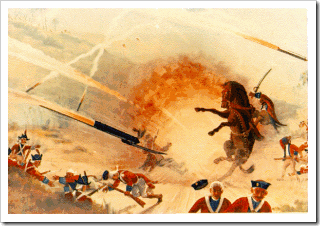 In the book we learn how Kalam started his career in Aeronautical Development Establishment (ADE) and was involved in the design of a hovercraft. Later he moved to Indian Space Research which was the brain child of Vikram Sarabhai. In 1963, Kalam went to NASA facility in Maryland(USA) as part of a training program on sounding rocket launching techniques. There he came across a painting which depicted Tipu Sultan’s rocket warfare against the British,
In the book we learn how Kalam started his career in Aeronautical Development Establishment (ADE) and was involved in the design of a hovercraft. Later he moved to Indian Space Research which was the brain child of Vikram Sarabhai. In 1963, Kalam went to NASA facility in Maryland(USA) as part of a training program on sounding rocket launching techniques. There he came across a painting which depicted Tipu Sultan’s rocket warfare against the British,
Here, I saw a painting prominently displayed in the reception lobby. It depicted a battle scene with a few rockets flying in the background. A painting with this theme should be the most commonplace thing at a Flight Facility, but the painting caught my eye because the soldiers on the side launching the rockets were not white , but dark-skinned, with the racial features of people found in South Asia. One day, my curiosity got the better of me, drawing me towards the painting. It turned out to be Tipu Sultan’s army fighting the British. The painting depicted a fact forgotten in Tipu’s own country but commemorated here on the other side of the planet. I was happy to see an Indian glorified by NASA as a hero of warfare rocketry.
The book covers a lot of "behind the scene" information and technical details about India’s satellite and missile program (SLV-3, Prithvi, Agni, Thrisul, Akash and Nag). This might interest technically inclined readers but is sure to put off readers who bought the book to get to know Kalam or to know his principles/ideas. Space and missile programs are huge complex projects and managing them is extremely challenging. The book does give a glimpse of the participatory management technique adopted by Kalam, but at the same time it doesn’t go into details.
Wings of fire covers Kalam’s personal life only briefly which is strange for an autobiography. For example, we don’t know why he decided to remain single or his activities outside space research (even though we can conclude in the end that he was married to science and technology).
Kalam is a poet and is a huge fan of poems. The book contains many of his own poems and his favorite poems. Here is an example,
Do not look at Agni
as an entity directed upward
to deter the ominous
or exhibit your might.
It is fire in the heart of an Indian.
Do not even give it
the form of a missile
as it clings to the
burning pride of this nation
and thus is bright.
Through Wings of Fire, we come across some brilliant people who worked behind Indian space research such as Vikram Sarabhai and Dr. Brahm Prakash. The book also contains about 24 photos and I found the ones from the early days of Indian space program very interesting. This alone is worth the price of the book!
One of the things that stands out throughout the book is Kalam’s positive thinking. He held many high ranking positions in various organizations. Yet in the book he rarely mentions anything about lethargy/corruption of bureaucracy or politicians. The secret to his success seems to be his ability to ignore negative things around him. The book also gives a clue to his popularity in India. Kalam is a simple, secular, inspiring humanitarian.
My Rating: 7/10. I liked the initial chapters, but wasn’t much impressed by later chapters. Kalam should look for a better writer to write his updated autobiography (After I wrote this review I realized that he has released a new autobiography titled "My Journey: Transforming Dreams into Actions").
Online Resources
Book Review : The Last Lecture by Randy Pausch
"We cannot change the cards we are dealt, just how we play the hand." – Randy Pausch
Introduction
It was sometime in 2007 that I first came across Randy Pausch’s "The Last Lecture" video in which Randy talked about about "Really Achieving Your Childhood Dreams". It has been an influential talk in my life and I have seen the video a couple of times since then. Recently I bought the "The Last Lecture" book by Randy which is based on this popular video. The book goes through the same topic as the video, but also has interesting additional material including background material on the lecture. This is my review of the book.
Background
Randy Pausch was a computer science professor at Carnegie Mellon University in Pennsylvania, US. His expertise was in virtual reality and he went on to create the Alice project. At the age of 46, he was diagnosed with pancreatic cancer. Carnegie Mellon had a lecture series called "the last lecture" (now known as journeys) where faculty members share their reflection on their life journeys. In the case of Randy, "the last lecture" was really like his last lecture since he had only months to live due to his terminal cancer.
On September 18, 2007, Randy Pausch gave his "last lecture" titled "Really Achieving Your Childhood Dreams". The lecture outlined his childhood dreams and how he went about achieving it in his life. It is in essence a short summary of his life and he said he intended the lecture as a message to his children. The video of the lecture became viral and as of writing this article, it had over 15 millions page views!
"The Last Lecture" soon became an internet sensation and Randy went on to do appearances in ABC Network, Oprah Winfrey Show, Time Magazine and also gave a speech at commencement ceremony in Carnegie Mellon. He also wrote a book titled "The Last Lecture" which was sold over 5 million copies world wide.
Randy died from pancreatic cancer on July,2008 at the age of 47. However his book and his lecture will remain a source of inspiration for the future generations.
Book Review : The Last Lecture by Randy Pausch
 The book is subtitled "Lessons in Living" and adds new material to the last lecture video. It is organized into 6 sections,
The book is subtitled "Lessons in Living" and adds new material to the last lecture video. It is organized into 6 sections,
(I) The Last Lecture – A background on the last lecture at Carnegie Mellon.
(II) Really Achieving Your Childhood Dreams – Much of the material here are also in the video.
(III) Adventures … And Lesson Learned -This is a collection of his life experiences and what he learned.
(IV) Enabling the Dreams of Others
(V) It is About How to Live Your Life – Randy lists the rules by which he tried to live his life.
(VI) Final Remarks
The first thing you notice is that the book assumes that you have seen the last lecture video. Many chapters refer to the background of the video and if you have seen it, you immediately make a connection.
When you read the book, it feels as if you are going through the entire life of Randy in a few minutes. We learn how he achieves his childhood dreams even when there are some really hard obstacles. According to him, the obstacles are there for a reason, it is to keep the "other" people out!
One of the things he mentions in his book is that when you want something, just ask. I have applied this principle even when I thought asking will lead to 100% rejection. Surprisingly, the actual rejection rate was something like 50% and even in those cases I think if I am persistent enough it would have worked. As Randy says,
"The brick walls are there for a reason. The brick walls are not there to keep us out; the brick walls are there to give us a chance to show how badly we want something"
Most of his advice on life is actually ancient wisdom and clearly these are all principles valid till the end of humanity (importance of hard work, dreaming big, showing gratitude etc.). It is interesting to see them in the context of Randy’s life. If you are looking for any soft of deep philosophical discussions, this is not the book for you.
His view of "failures" is that it is what gives us experience. He even had an award for "glorious failure" in his "building virtual worlds" course. As Randy says,
"Experience is what you get when you didn’t get what you wanted"
At just over 200 pages, "The Last Lecture" is a small book. In every page you find a man’s agony in knowing that soon his children won’t have a father to protect & guide them. Randy writes in such a honest and passionate way that you will find it hard to stop once you start reading the book.
My Rating : 8/10. This is a good book. It may have a positive influence on the way you live.
Other Notable Quotes by Randy Pausch
"If I only had three words of advice, they would be, Tell the Truth. If got three more words, I’d add, all the time."
"When you’re screwing up and nobody says anything to you anymore, that means they’ve given up on you."
"It’s not about how to achieve your dreams, it’s about how to lead your life, If you lead your life the right way, the karma will take care of itself, the dreams will come to you."




